|
|

|
Sunday 6 May 2018
No Delay........With most of my blog completed before breakfast I needn't worry since this is the last day of the tour before I return to the UK. I need to allow 3 hours for the return to Bangkok which means we could leave late in the afternoon. Breakfast is the usual continental version which is quite sufficient under the circumstance. Thankfully there is no unnecessary delay; we can leave at 10am. There is but one site left in Phetchaburi which I consider important enough to visit and it’s not far away.
Wat Phra Phut Saiyat (Saiyat Buddhist Temple)........This temple was missed off my earlier site visits for Phetchaburi seemingly because I wrote down the name according to Google Map when locally it’s known by the alternate name Wat Phra Norn which simply means ‘reclining Buddha’. It’s actually easy to find lying near the base of Nakhon Kiri Hill on Khiri Rat Ya Road.
Though the period of construction is unknown, it is assumed that the ancient temple dated back up to the Ayutthaya period. Wat Phra Phut Saiyat is home to a 400 year old image of the reclining Buddha. The Buddha is of brick-and-cement construction, 43 metres long and 15 metres high from head to the platform. It is the fourth largest reclining Buddha image in Thailand.
No Delay........With most of my blog completed before breakfast I needn't worry since this is the last day of the tour before I return to the UK. I need to allow 3 hours for the return to Bangkok which means we could leave late in the afternoon. Breakfast is the usual continental version which is quite sufficient under the circumstance. Thankfully there is no unnecessary delay; we can leave at 10am. There is but one site left in Phetchaburi which I consider important enough to visit and it’s not far away.
Wat Phra Phut Saiyat (Saiyat Buddhist Temple)........This temple was missed off my earlier site visits for Phetchaburi seemingly because I wrote down the name according to Google Map when locally it’s known by the alternate name Wat Phra Norn which simply means ‘reclining Buddha’. It’s actually easy to find lying near the base of Nakhon Kiri Hill on Khiri Rat Ya Road.
Though the period of construction is unknown, it is assumed that the ancient temple dated back up to the Ayutthaya period. Wat Phra Phut Saiyat is home to a 400 year old image of the reclining Buddha. The Buddha is of brick-and-cement construction, 43 metres long and 15 metres high from head to the platform. It is the fourth largest reclining Buddha image in Thailand.
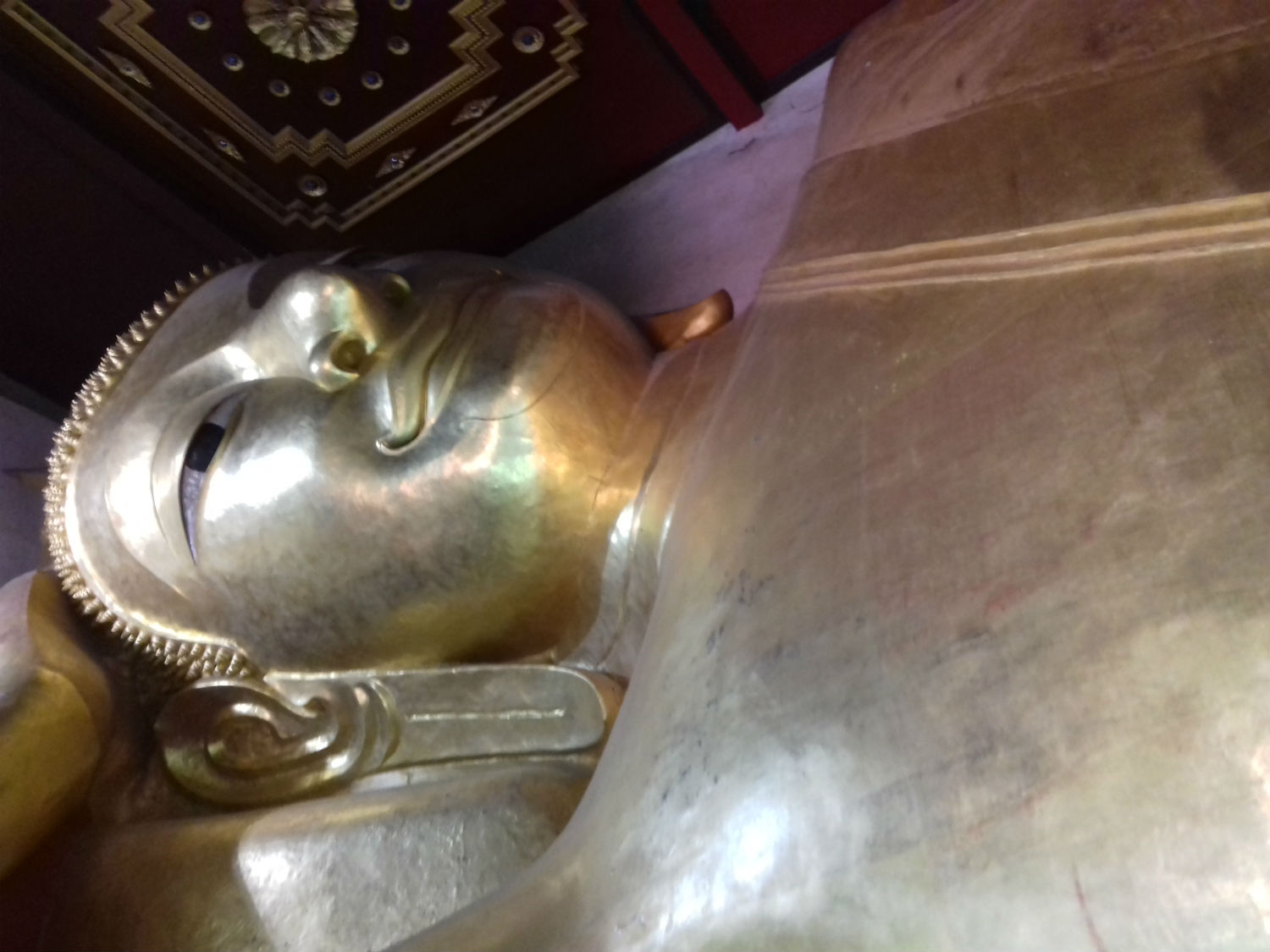
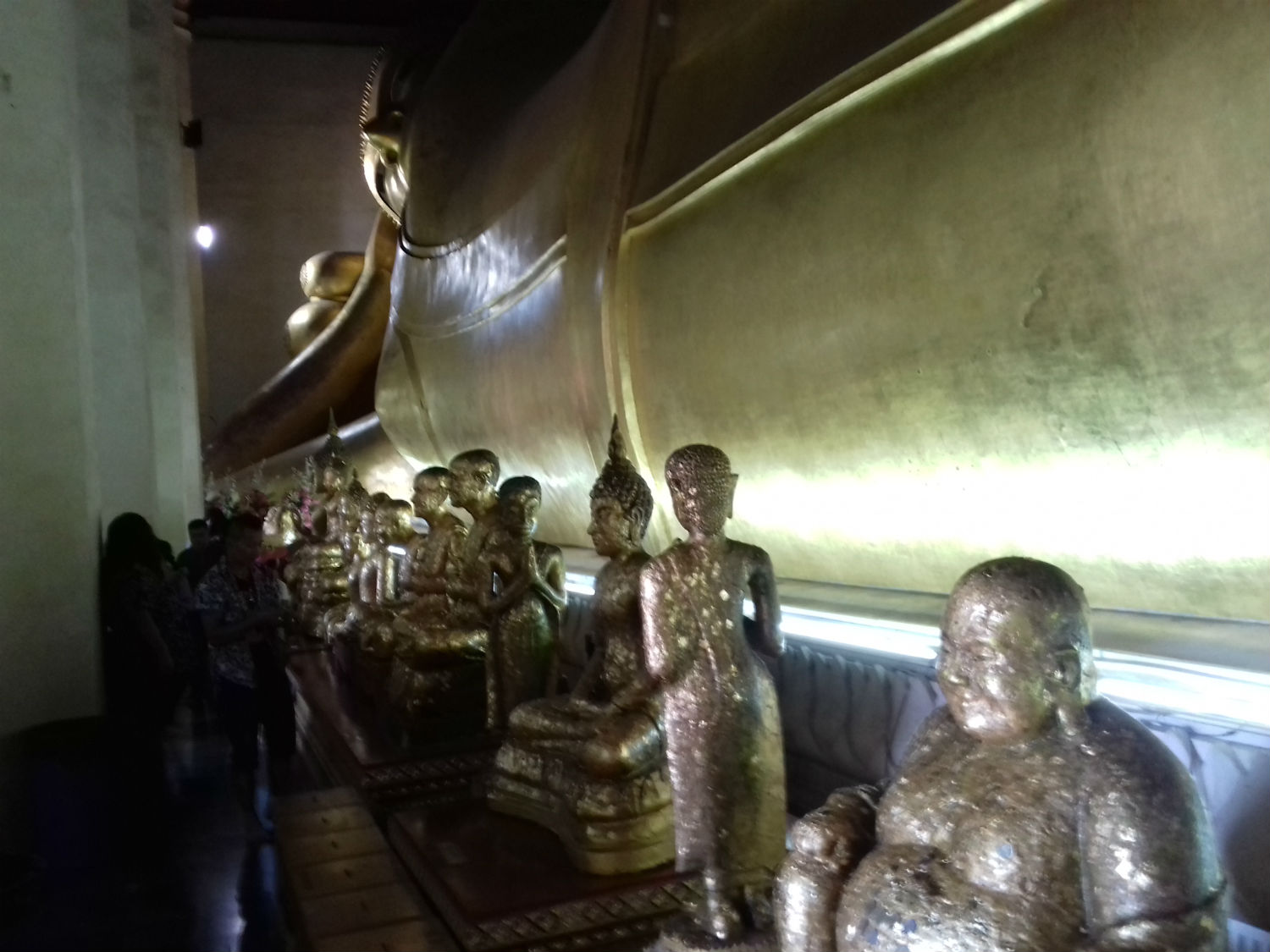
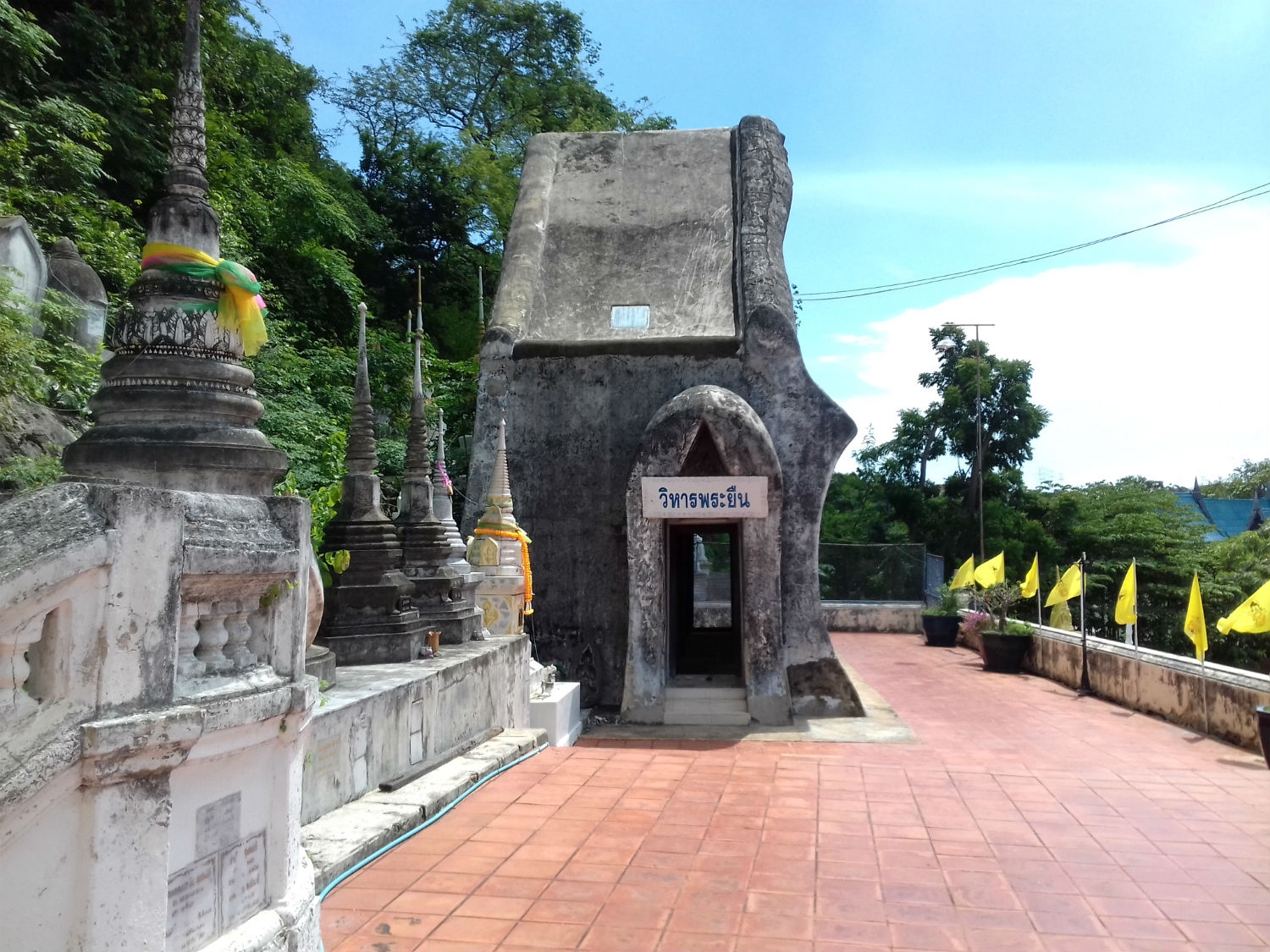
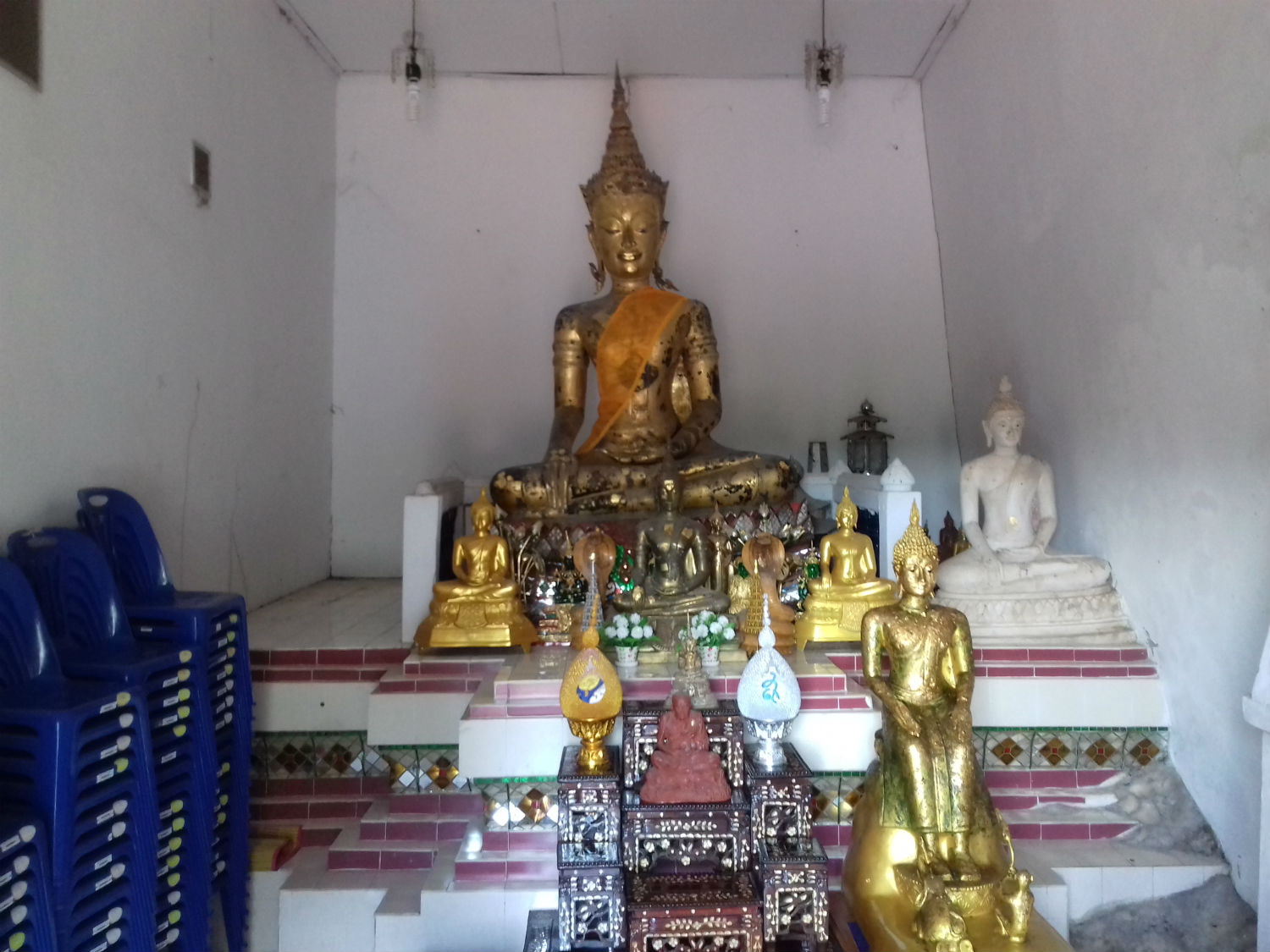
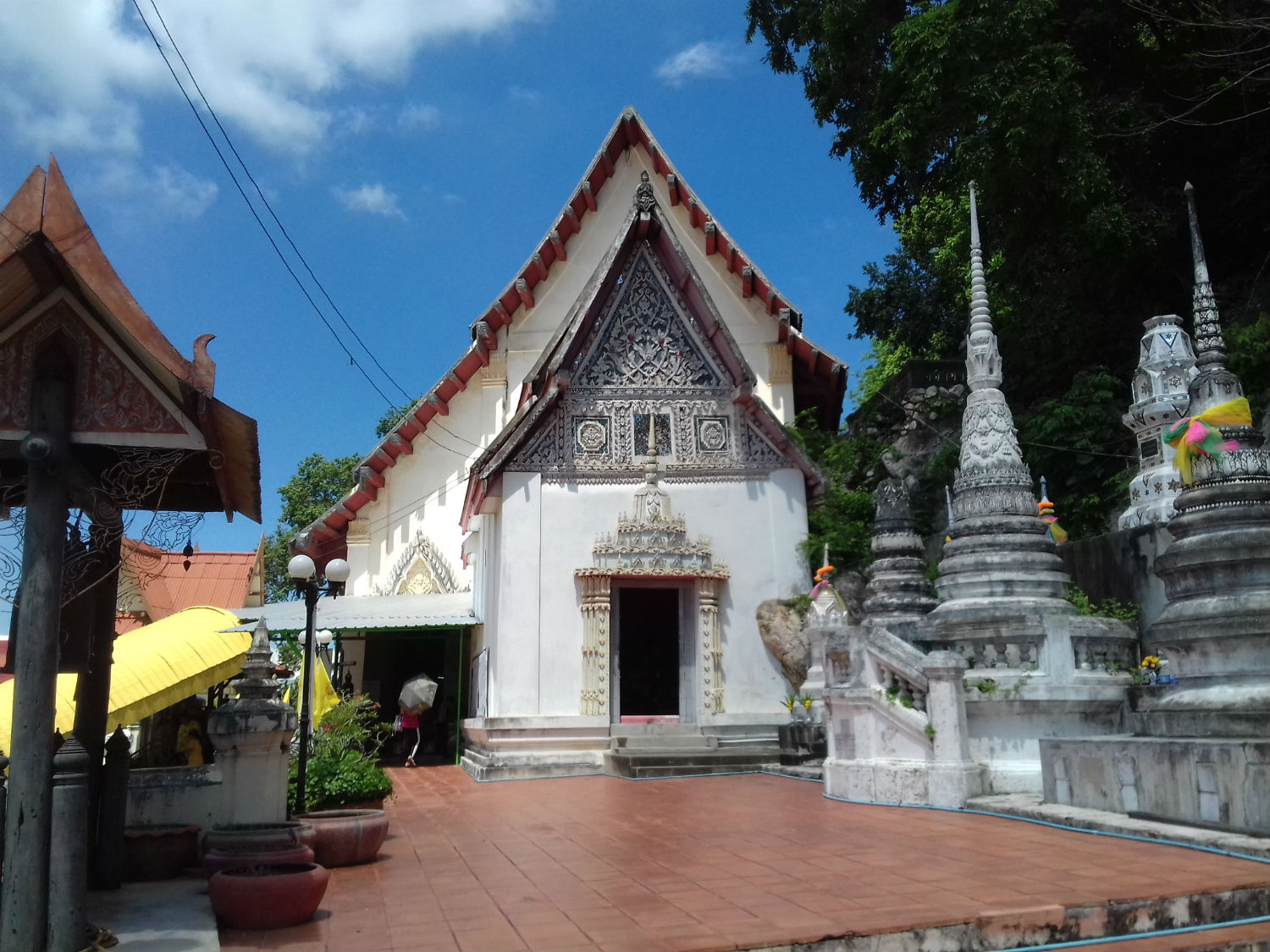
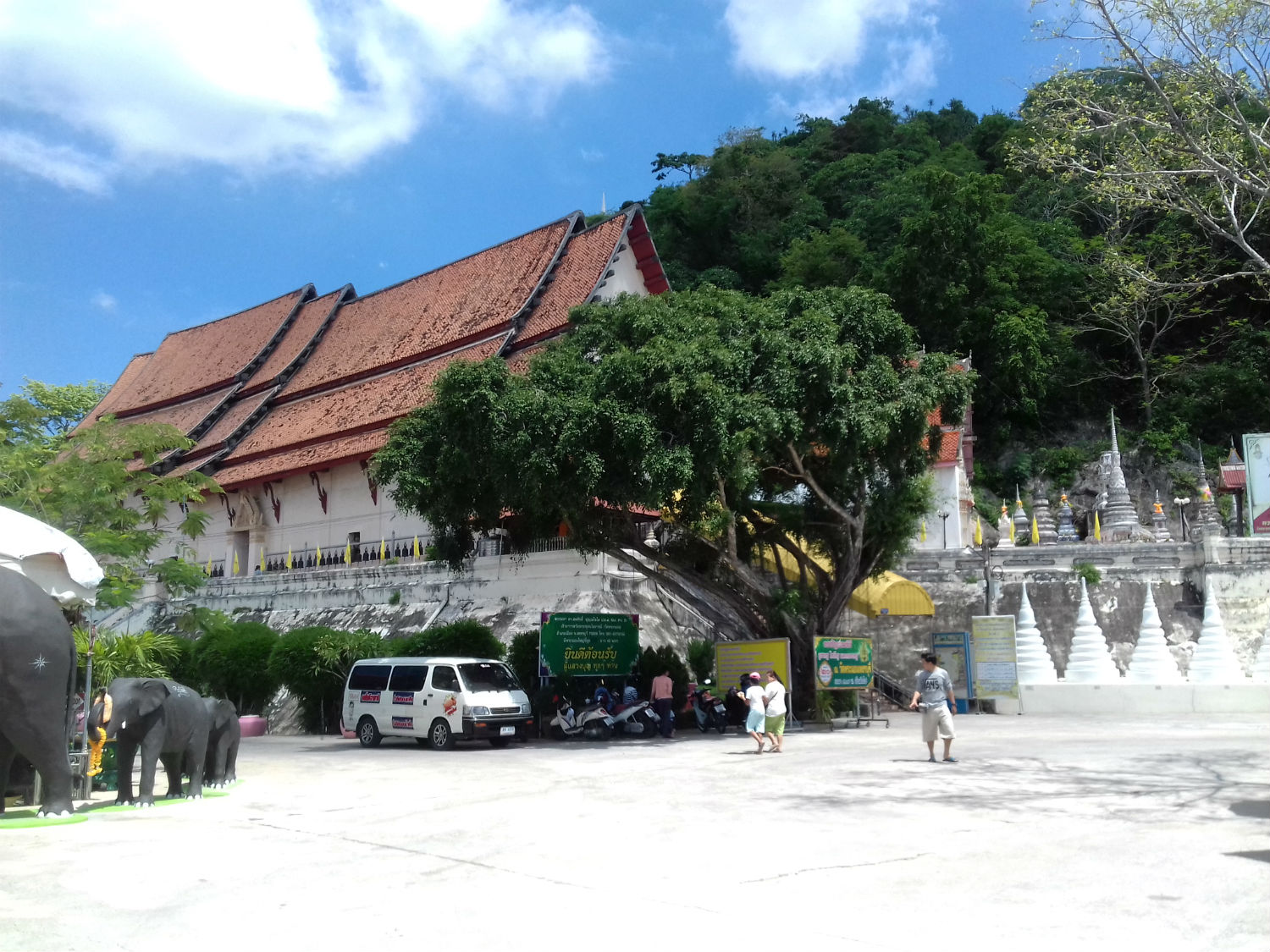
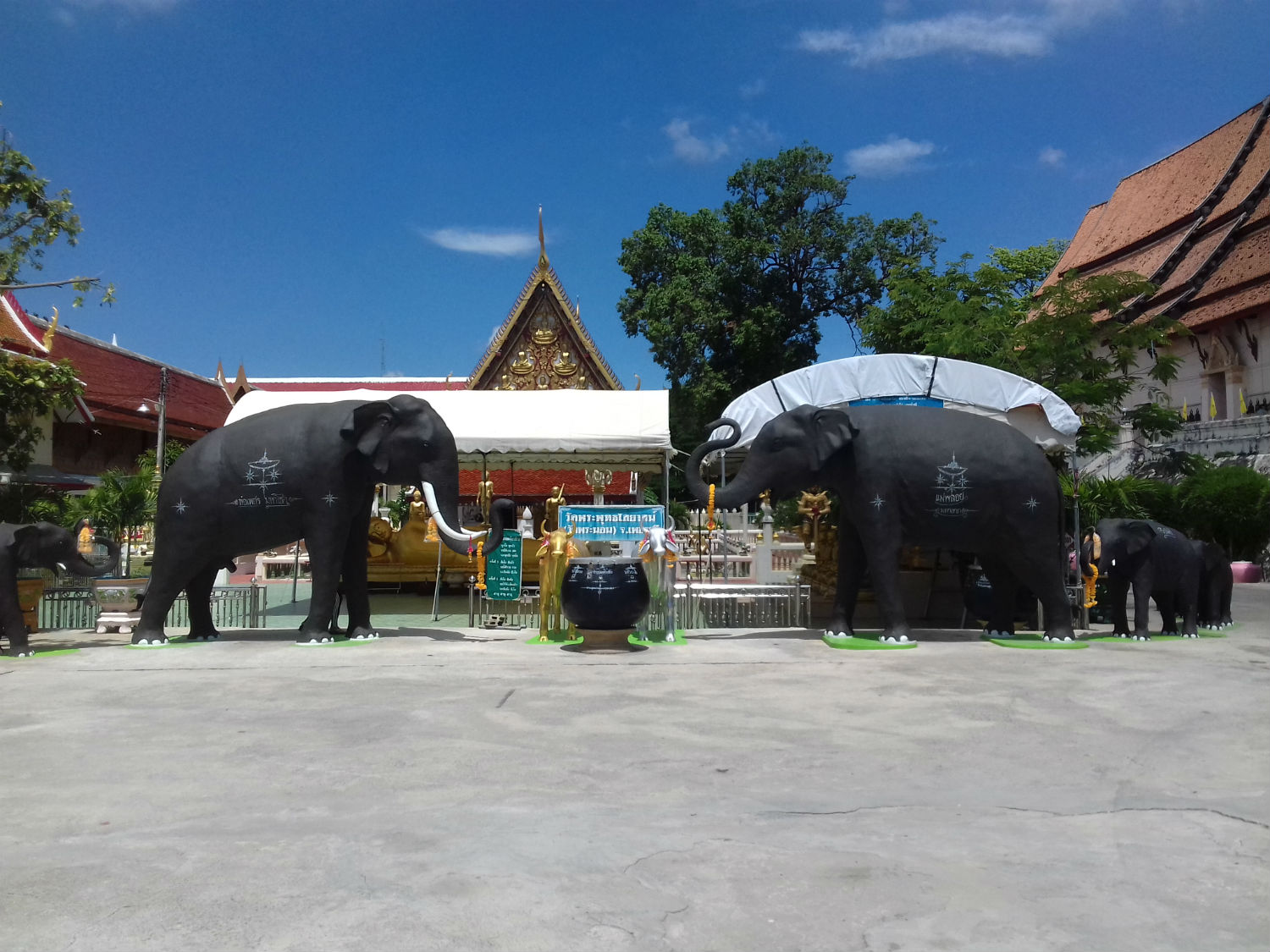
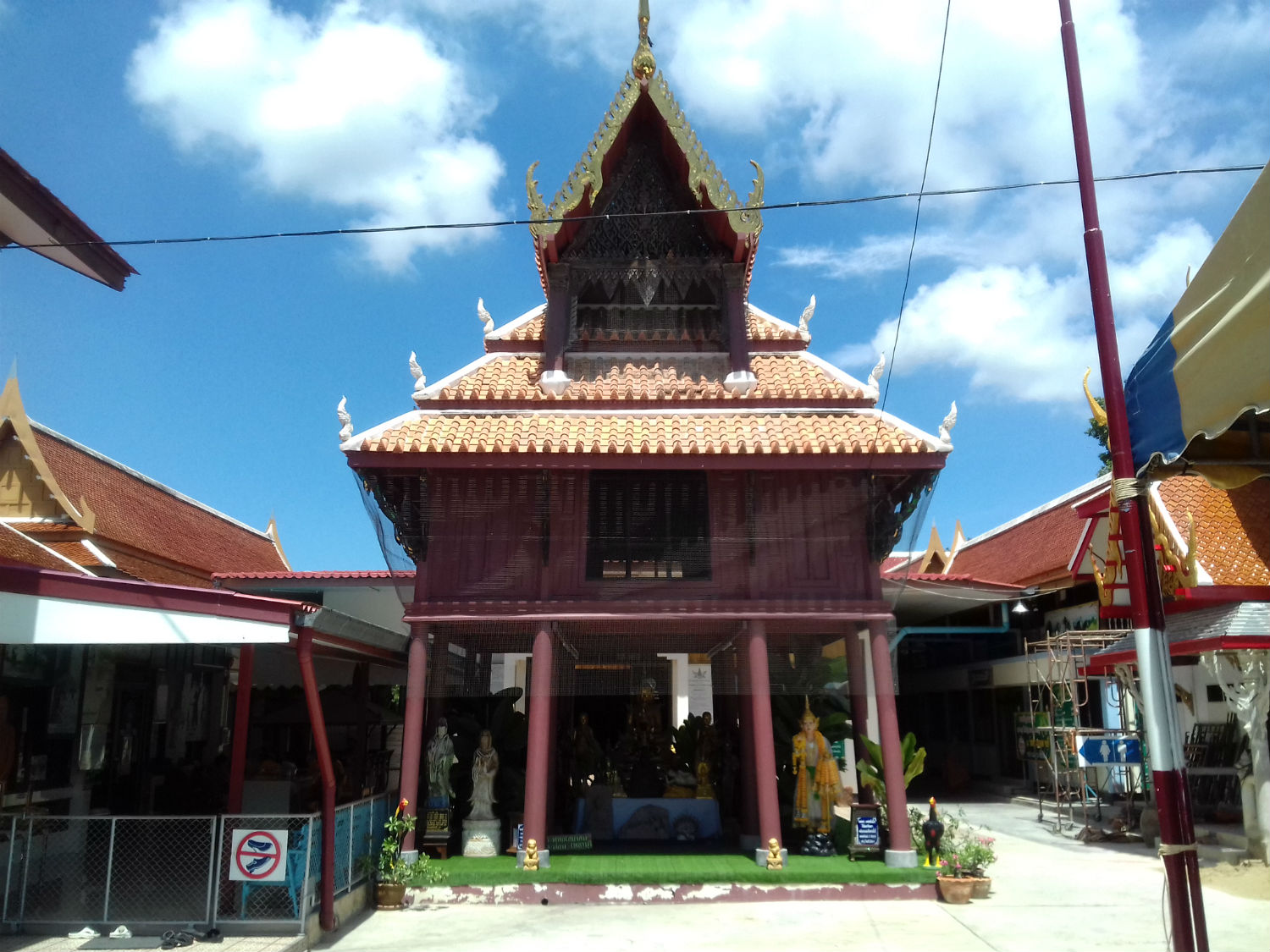
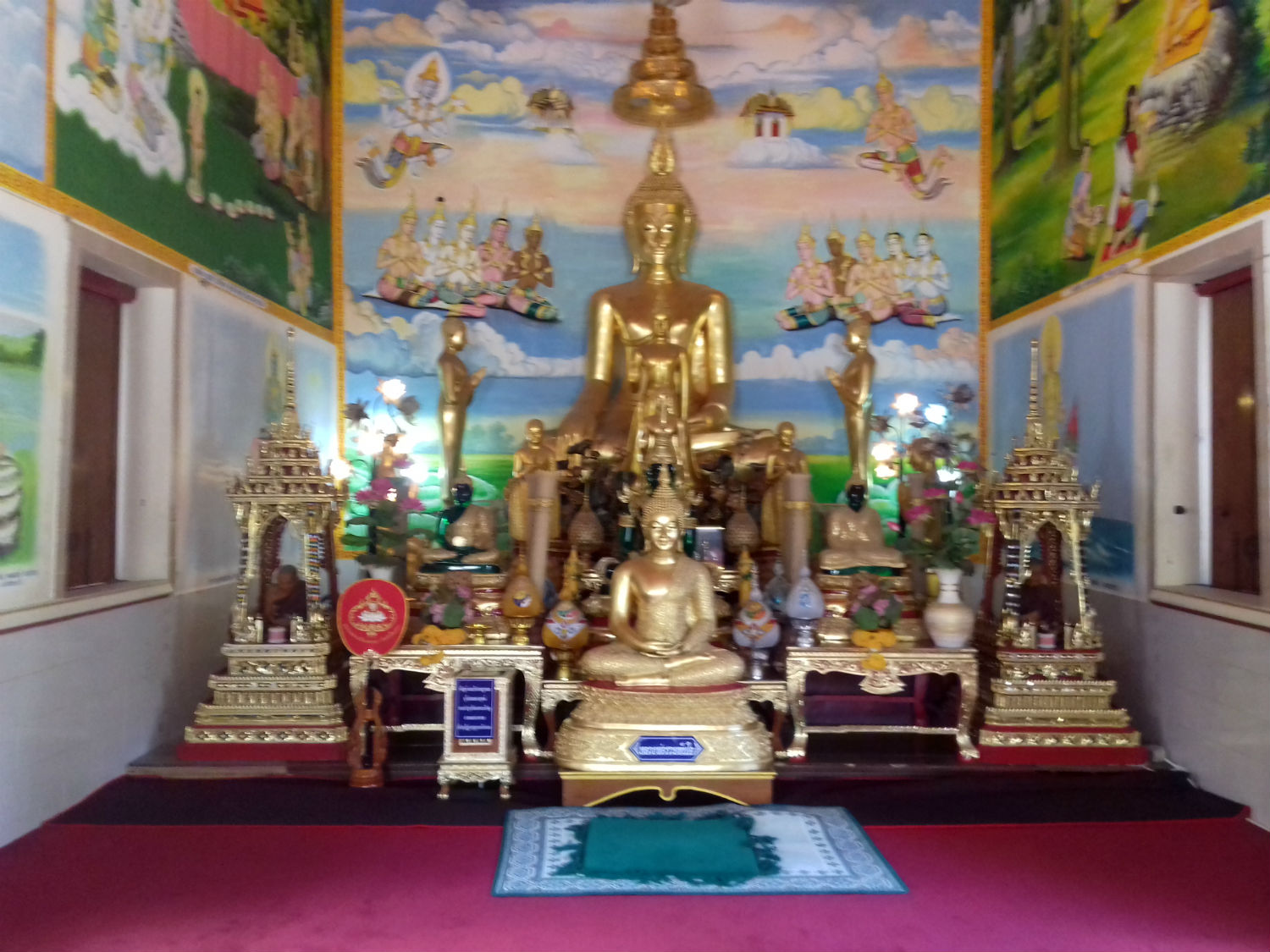 Wat Phra Phut Saiyat (Saiyat Buddhist Temple), Phetchaburi
Wat Phra Phut Saiyat (Saiyat Buddhist Temple), Phetchaburi
Being built by the Mon, ‘Phra Norn’ at Wat Phra Phut Saiyat was originally situated outdoors. After the Ayutthaya period, the temple was abandoned until the reign of Rama IV. The king visited Phra Nakorn Khiri (Khao Wang) in Phetchaburi Province and saw that the Buddha image had been ruined by the weather, so he had a tin roof built as a shelter for the statue. Later, King Rama V had the roof renovated. The Buddha image was then sheltered with tile roofing and encircled by the wall as seen nowadays.
Situated in the ubosot, Phra Norn is the main Buddha image of Wat Phra Phut Saiyat. It is also the patron Buddha of those born on Tuesdays. The head of the image point to the south. Inside the image are eleven cave rooms which are now closed due to lack of oxygen inside. Another highlight of the image is the two lotus-shape pillows supporting the Buddha’s head. The temple has been under the care of the Fine Arts Department since 1995.
Puek Tian Beach........For the final trek home we decide to hug the coastline as we had done arriving here having identified some interesting sites. We start at Puek Tian Beach. Located not so far from Cha-Am Beach it’s more popular with Thais since it’s more difficult to reach for foreigners. It’s another location I’ve visited before but unlike Cha-Am has so far not been covered on this site. However there is not too much I can tell you about it except that being a Sunday it is packed with visitors. It’s quite a small beach but mimics it’s near neighbour in having a profusion of deckchairs for hire with of course the usual catering. The ocean is calm and inviting but whichever the way a look at it, I can’t spend any length of time here as I start to head north.
Situated in the ubosot, Phra Norn is the main Buddha image of Wat Phra Phut Saiyat. It is also the patron Buddha of those born on Tuesdays. The head of the image point to the south. Inside the image are eleven cave rooms which are now closed due to lack of oxygen inside. Another highlight of the image is the two lotus-shape pillows supporting the Buddha’s head. The temple has been under the care of the Fine Arts Department since 1995.
Puek Tian Beach........For the final trek home we decide to hug the coastline as we had done arriving here having identified some interesting sites. We start at Puek Tian Beach. Located not so far from Cha-Am Beach it’s more popular with Thais since it’s more difficult to reach for foreigners. It’s another location I’ve visited before but unlike Cha-Am has so far not been covered on this site. However there is not too much I can tell you about it except that being a Sunday it is packed with visitors. It’s quite a small beach but mimics it’s near neighbour in having a profusion of deckchairs for hire with of course the usual catering. The ocean is calm and inviting but whichever the way a look at it, I can’t spend any length of time here as I start to head north.
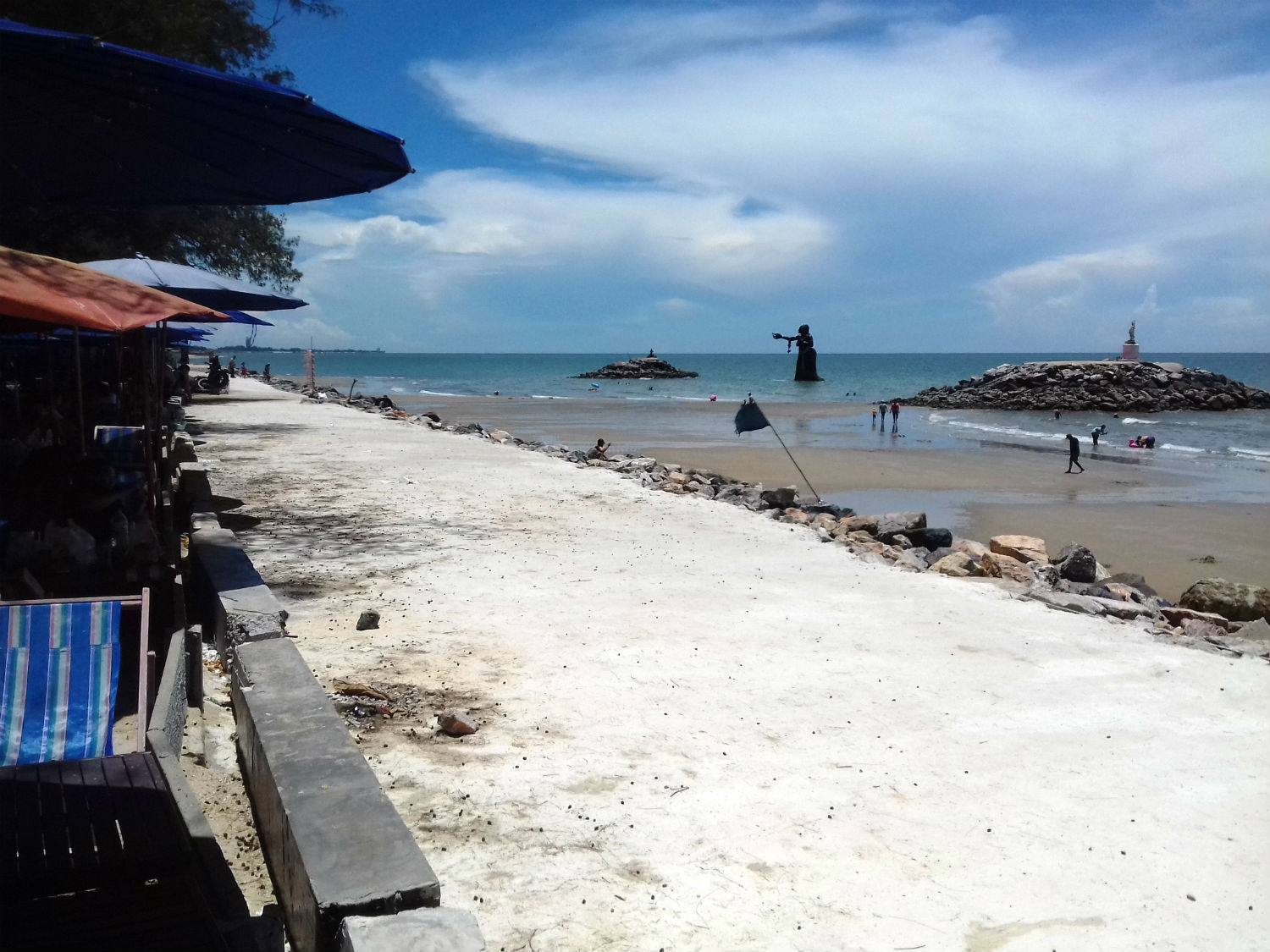
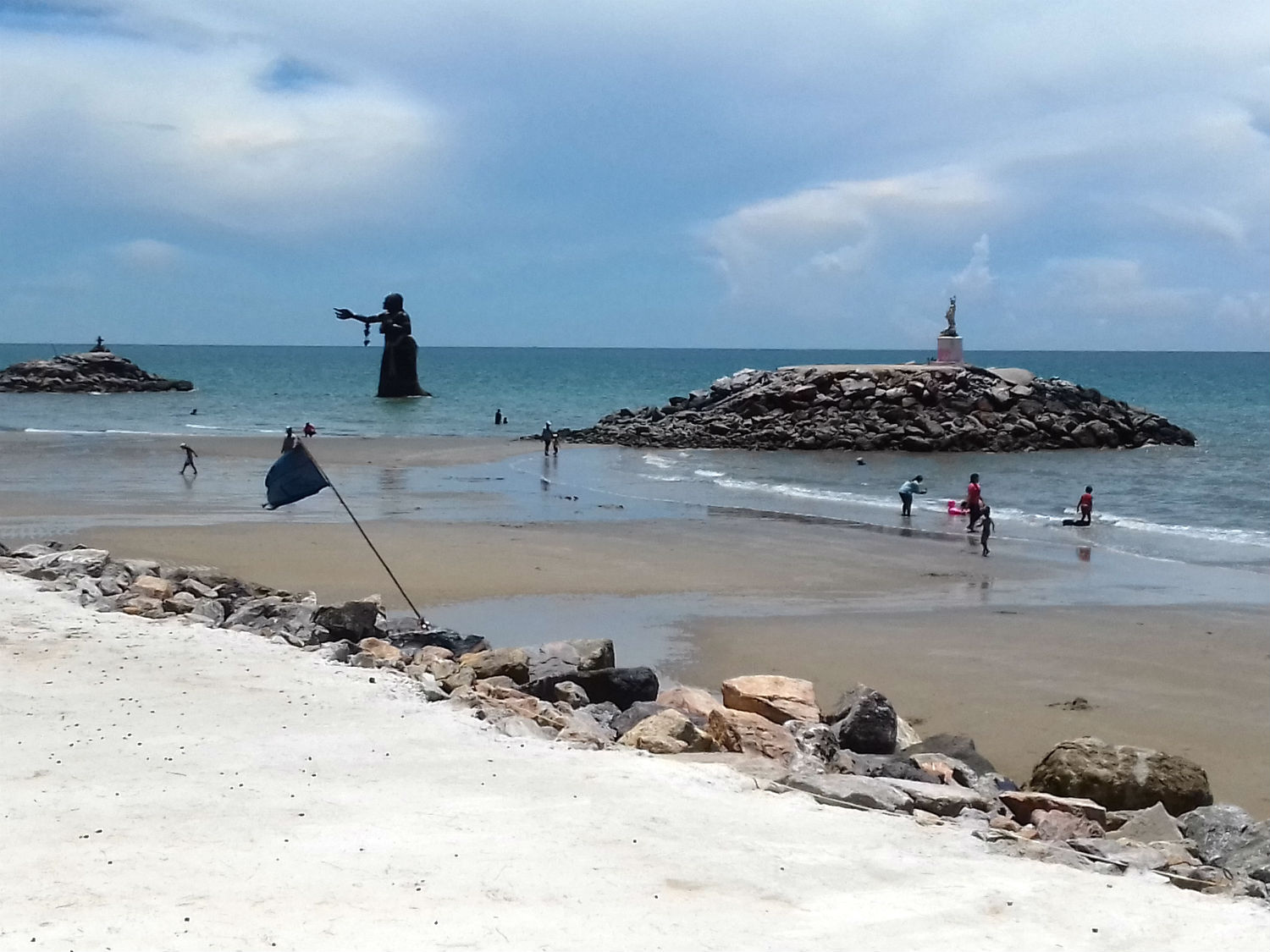
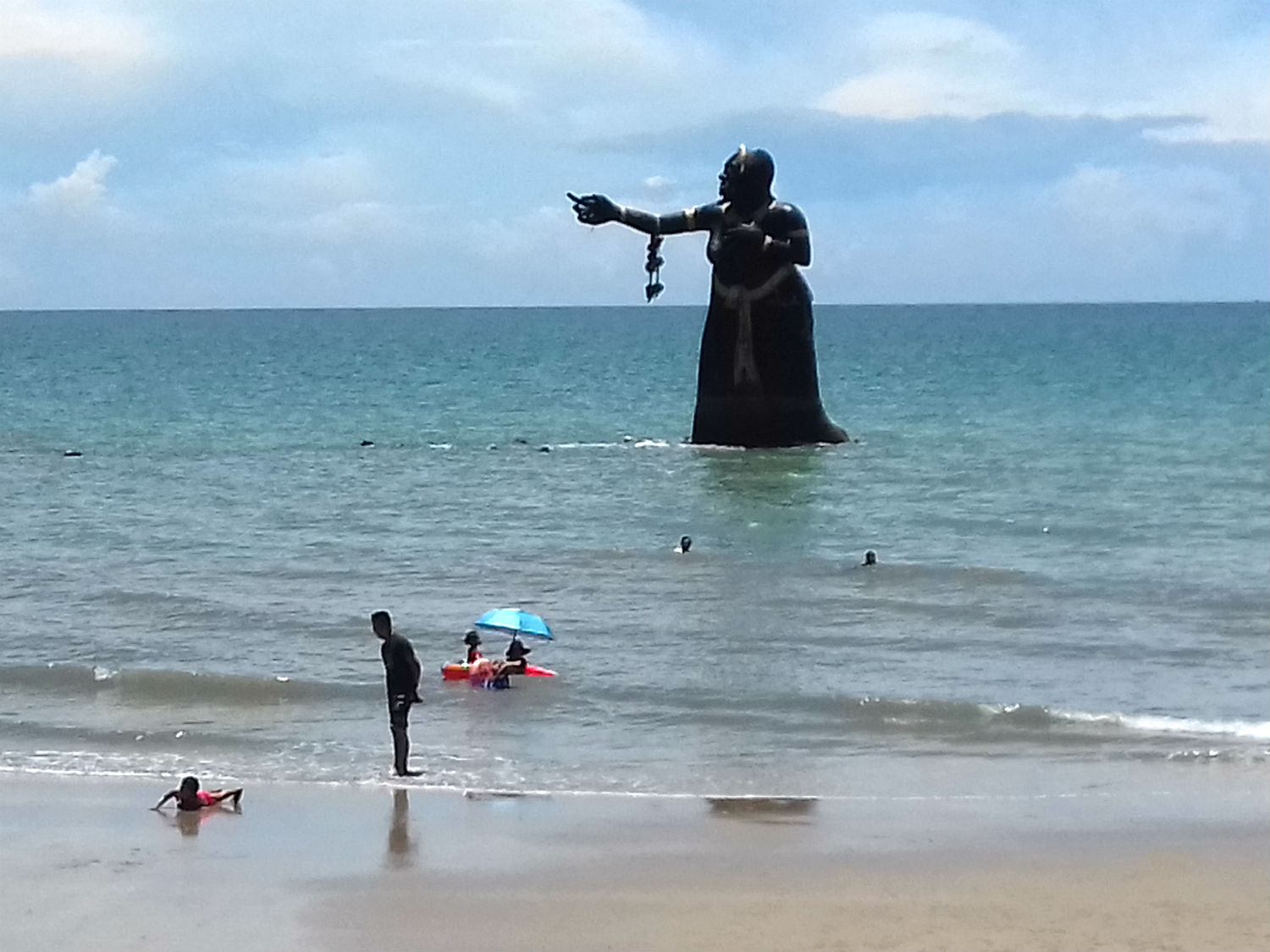 Puek Tian Beach, Phetchaburi Province
Puek Tian Beach, Phetchaburi Province
Chao Samran Beach........Chao Samran Beach is just a little further along the coast and is practically the first sandy beach along the western shore of the Gulf of Thailand. As that makes it within a day-trip of Bangkok, like it’s near neighbours it is absolutely packed with day trippers with hardly enough room to walk on the beach let alone put a towel down. The difference between Chao Samran Beach and the last is that no deckchairs are provided which I guess makes it even more attractive to Thai visitors. Having passed through the village on the way here enquiring about accommodation, I see a huge difference in the amount of traffic; I can hardly move through it.
Historically Chao Samran beach has been a significant resort of the royal family since the Ayutthaya period. There is a legend that King Naresuan the Great and his brother, King Ekathotsarot, fell in love with this peaceful seaside location and decided to extend their stay during a short visit. Since then, people decided to name this beach as Hat Chao Samran, meaning the Royal Leisure Beach.
Historically Chao Samran beach has been a significant resort of the royal family since the Ayutthaya period. There is a legend that King Naresuan the Great and his brother, King Ekathotsarot, fell in love with this peaceful seaside location and decided to extend their stay during a short visit. Since then, people decided to name this beach as Hat Chao Samran, meaning the Royal Leisure Beach.
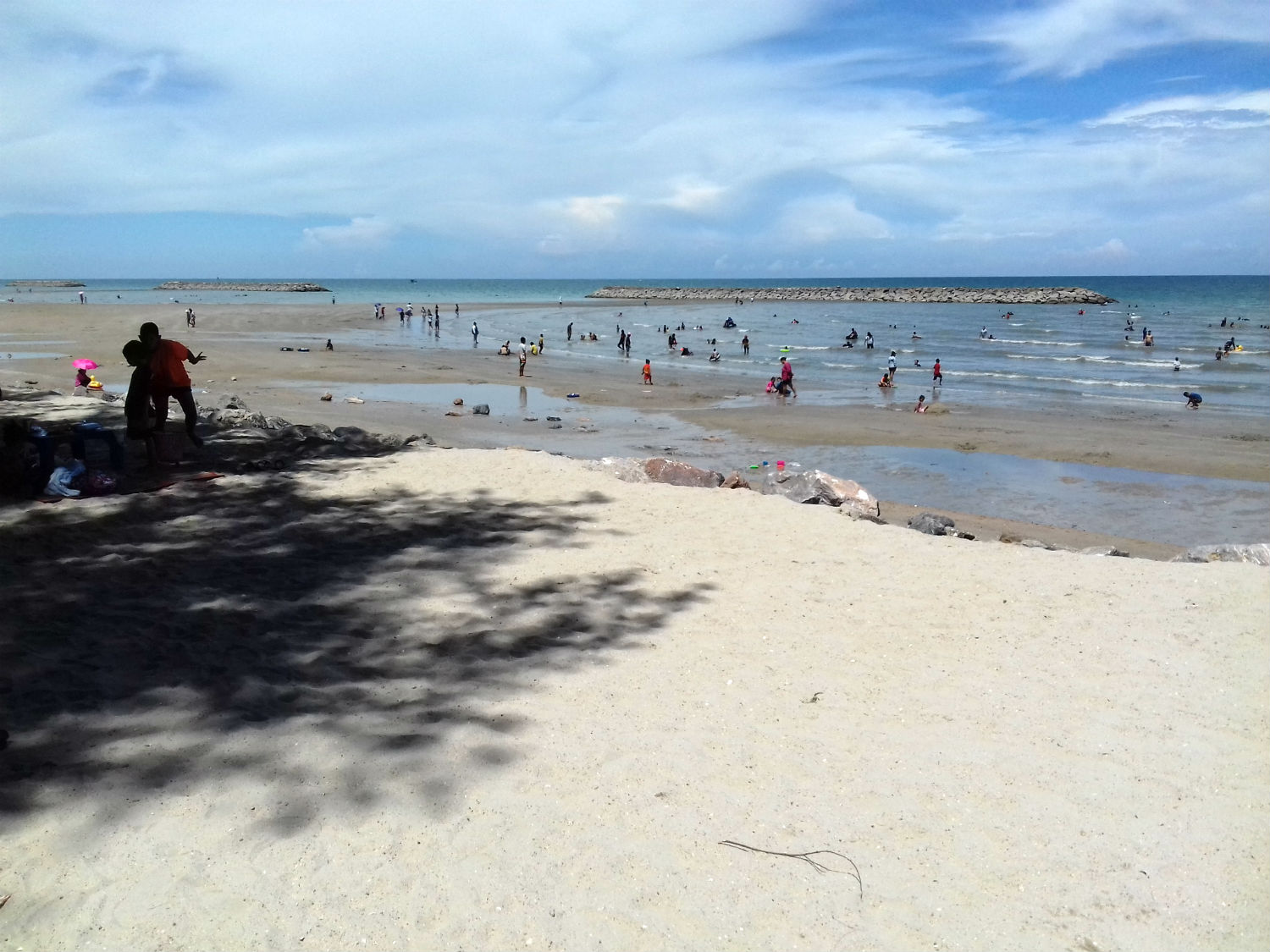
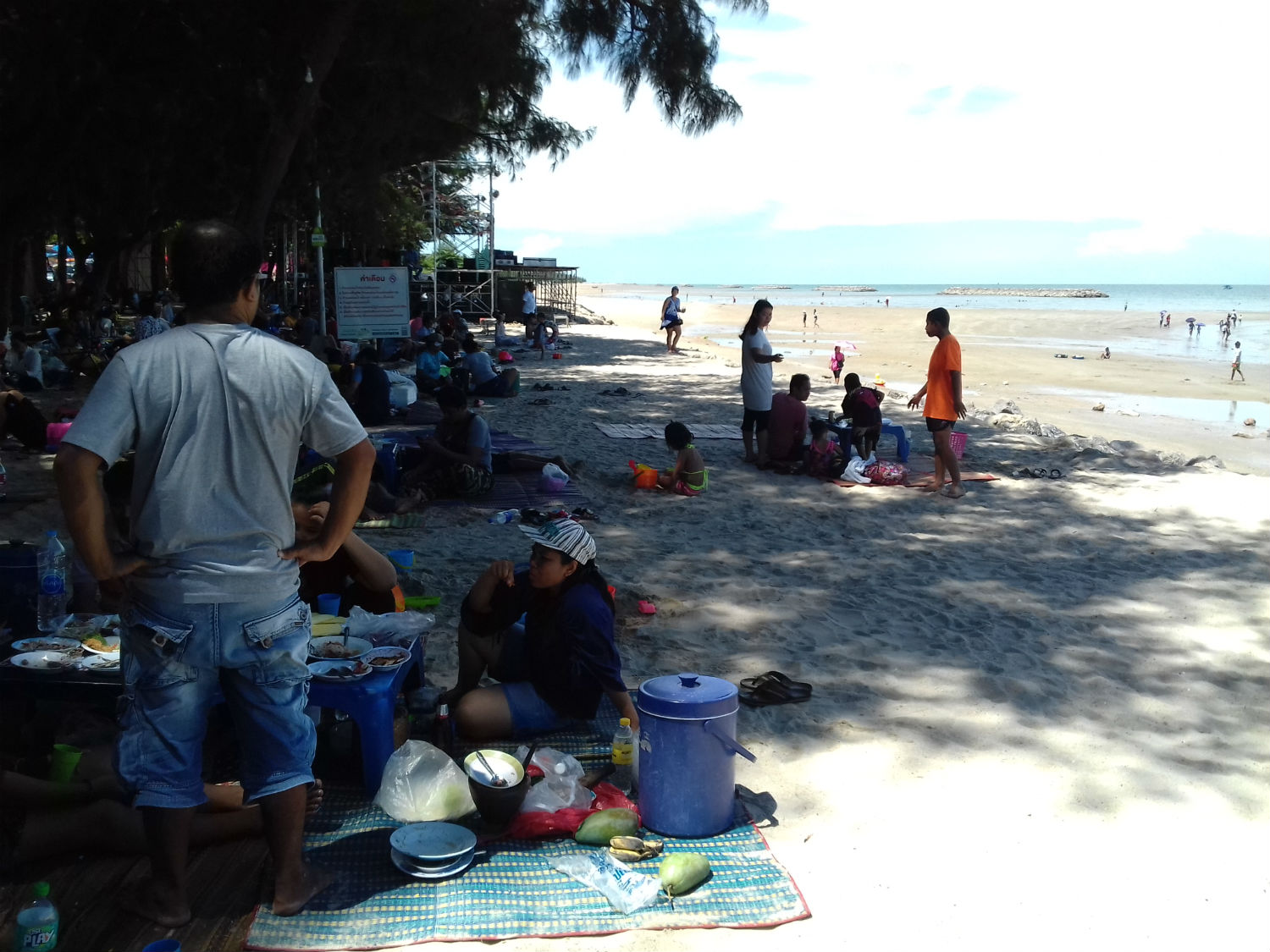
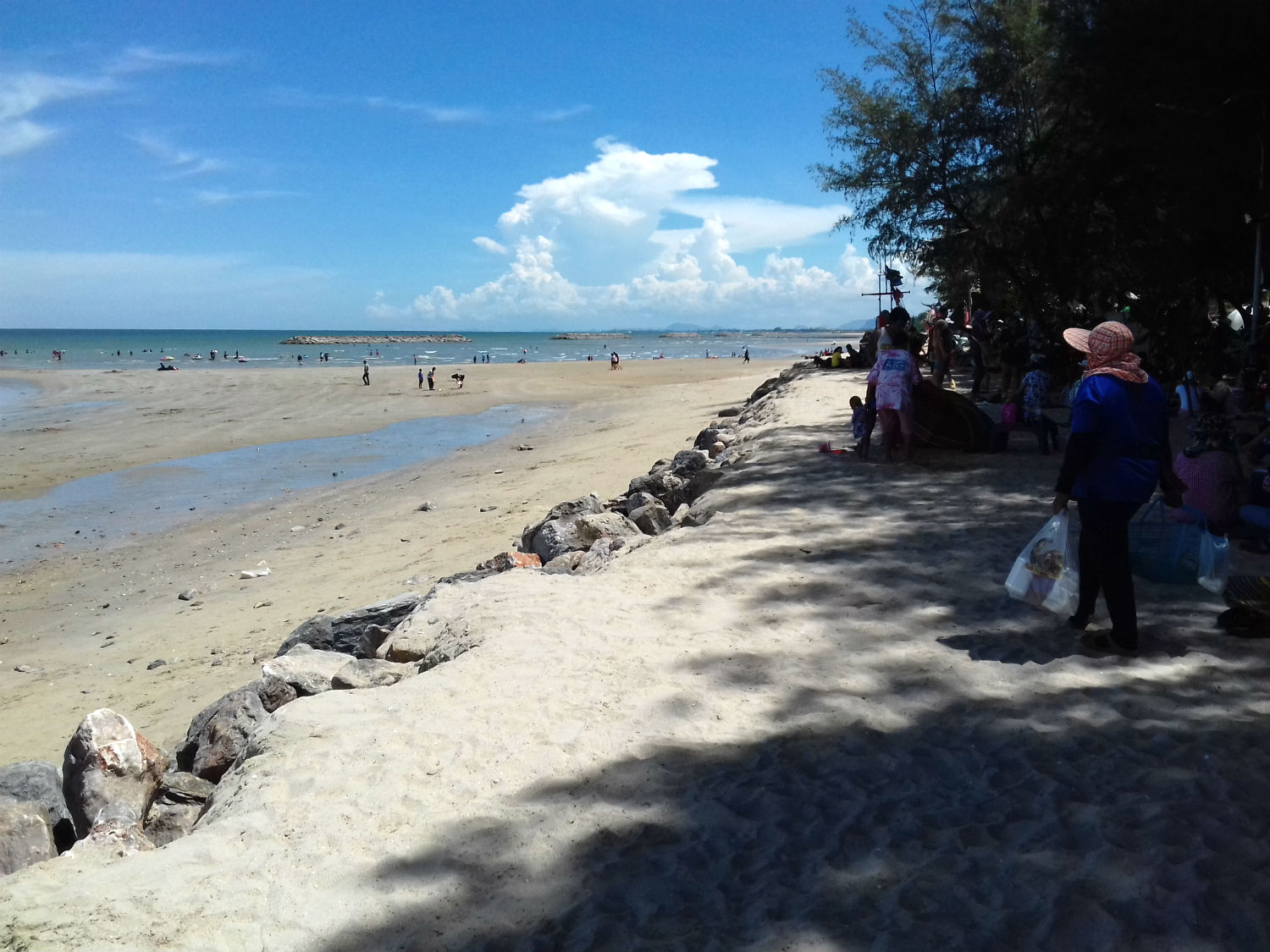 Chao Samran Beach, Phetchaburi Province
Chao Samran Beach, Phetchaburi Province
The beach was highly popular during King Rama VI period, who ordered the construction of Hat Chao Samram Palace, which was completed in 1918.
Dining like Kings........The idea of being packed onto a tourist beach today doesn’t fill me with a great deal of pleasure but we need to eat. I’ll take any roadside restaurant if it’s quiet but at the same time it would be nice to have a seafood lunch as it’s the last day on tour. Following the road towards Laem Phak Bia, Katoon stops at the roadside to investigate the fish laid out on racks drying in the sun; a way of preserving them. We see they have a number of varieties and for quite small money Katoon fills a bag full of dried fish. Ok that doesn’t really help with lunch but we’re directed to a seafood restaurant nearby which to my way of thinking could also date back to the Ayutthaya period. Hmmm! However it’s the food that matters and it seems to be the case of net to table here as various live fish are kept in tanks at the back.
Dining like Kings........The idea of being packed onto a tourist beach today doesn’t fill me with a great deal of pleasure but we need to eat. I’ll take any roadside restaurant if it’s quiet but at the same time it would be nice to have a seafood lunch as it’s the last day on tour. Following the road towards Laem Phak Bia, Katoon stops at the roadside to investigate the fish laid out on racks drying in the sun; a way of preserving them. We see they have a number of varieties and for quite small money Katoon fills a bag full of dried fish. Ok that doesn’t really help with lunch but we’re directed to a seafood restaurant nearby which to my way of thinking could also date back to the Ayutthaya period. Hmmm! However it’s the food that matters and it seems to be the case of net to table here as various live fish are kept in tanks at the back.
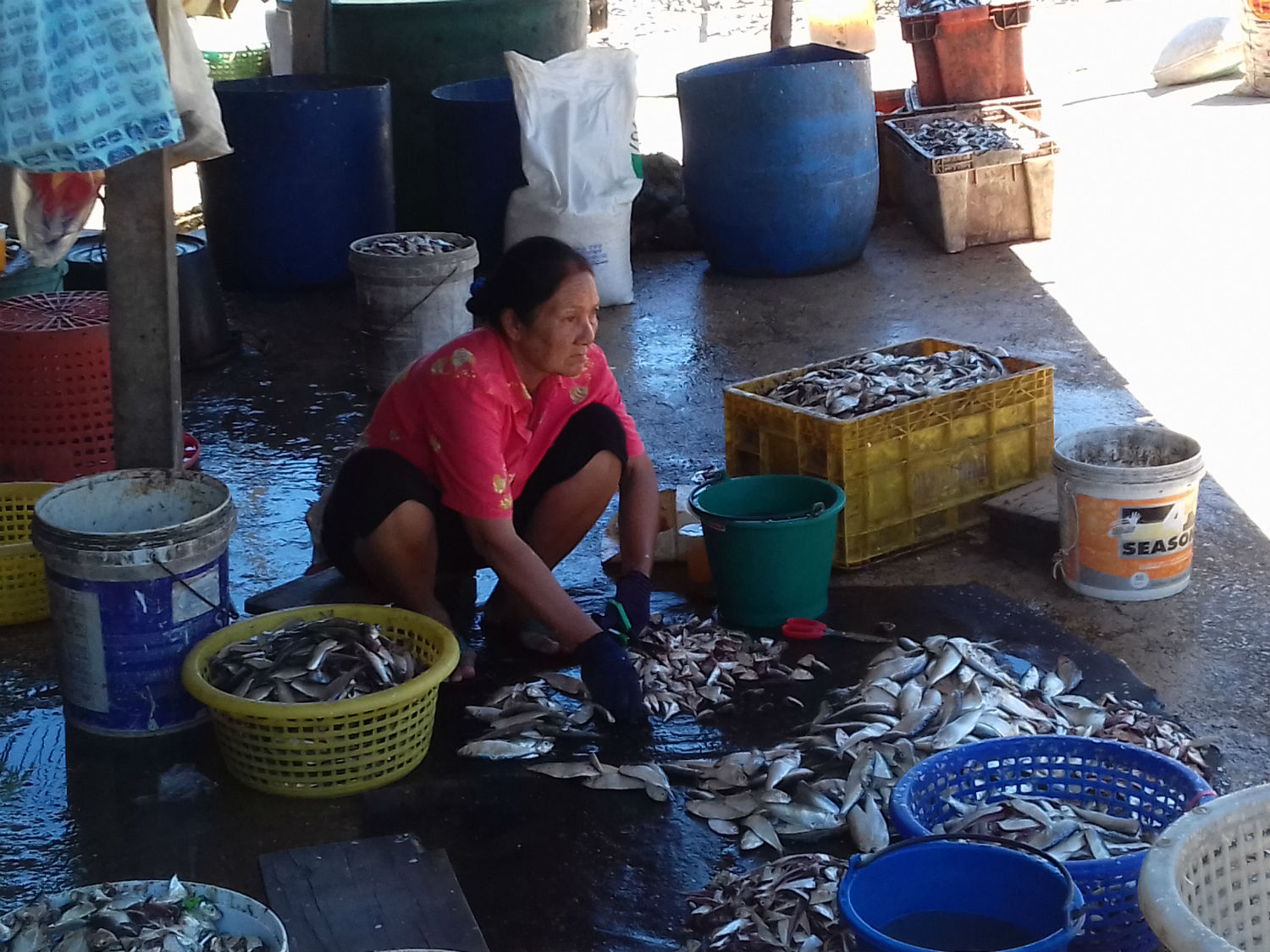
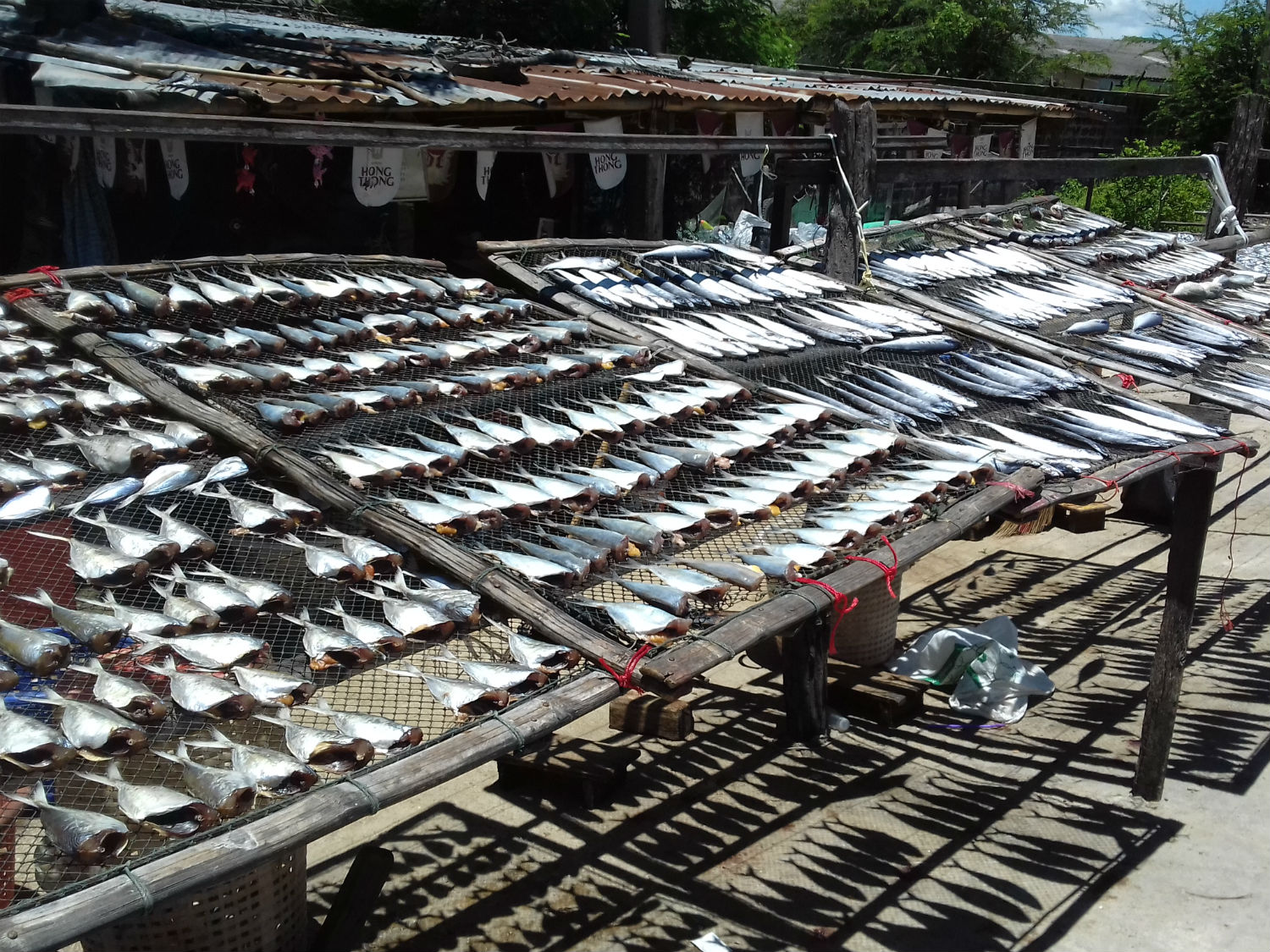
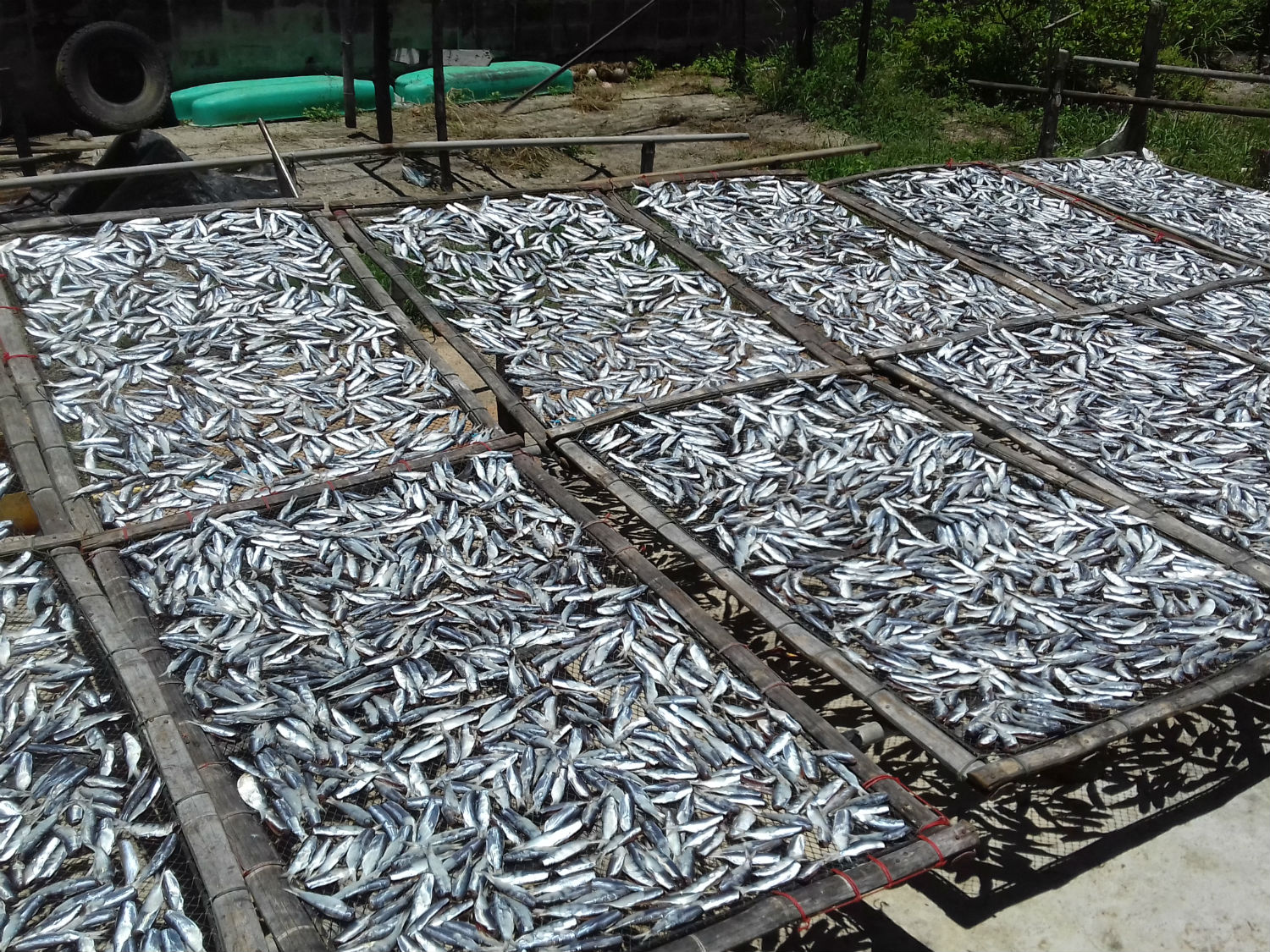 Fisherman's catch, near Chao Samran Beach, Phetchaburi Province
Fisherman's catch, near Chao Samran Beach, Phetchaburi Province
Without considering the cost we order four dishes off the menu, one of which is a bit of a gamble since the last time I ate shellfish, I was very ill. When the dishes arrive I’m sure they would be fit for a king and how we’ll get through it all I’ll never know. Then somehow the plates become empty except for shells and other debris. It seems a fitting end to the tour irrespective of the bill. When that arrives at just over 400 baht I'm totally amazed, just £9 for both of us. At 2pm it’s still too early to press the panic button but there’s at least one more site I’d like to visit. Then just a little further along the coast at Leam Phak Bia a small fishing village presents a good photo opportunity.
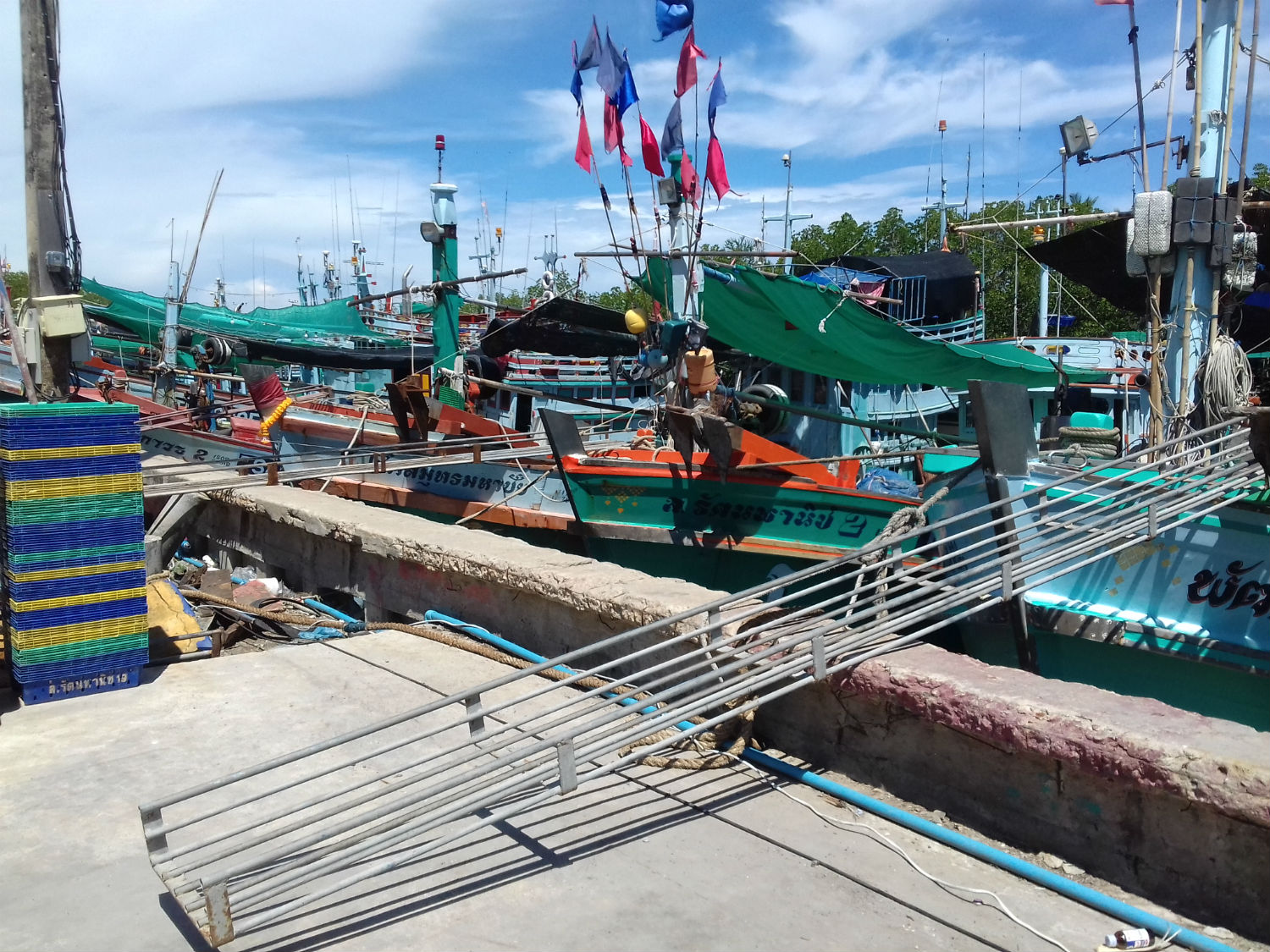
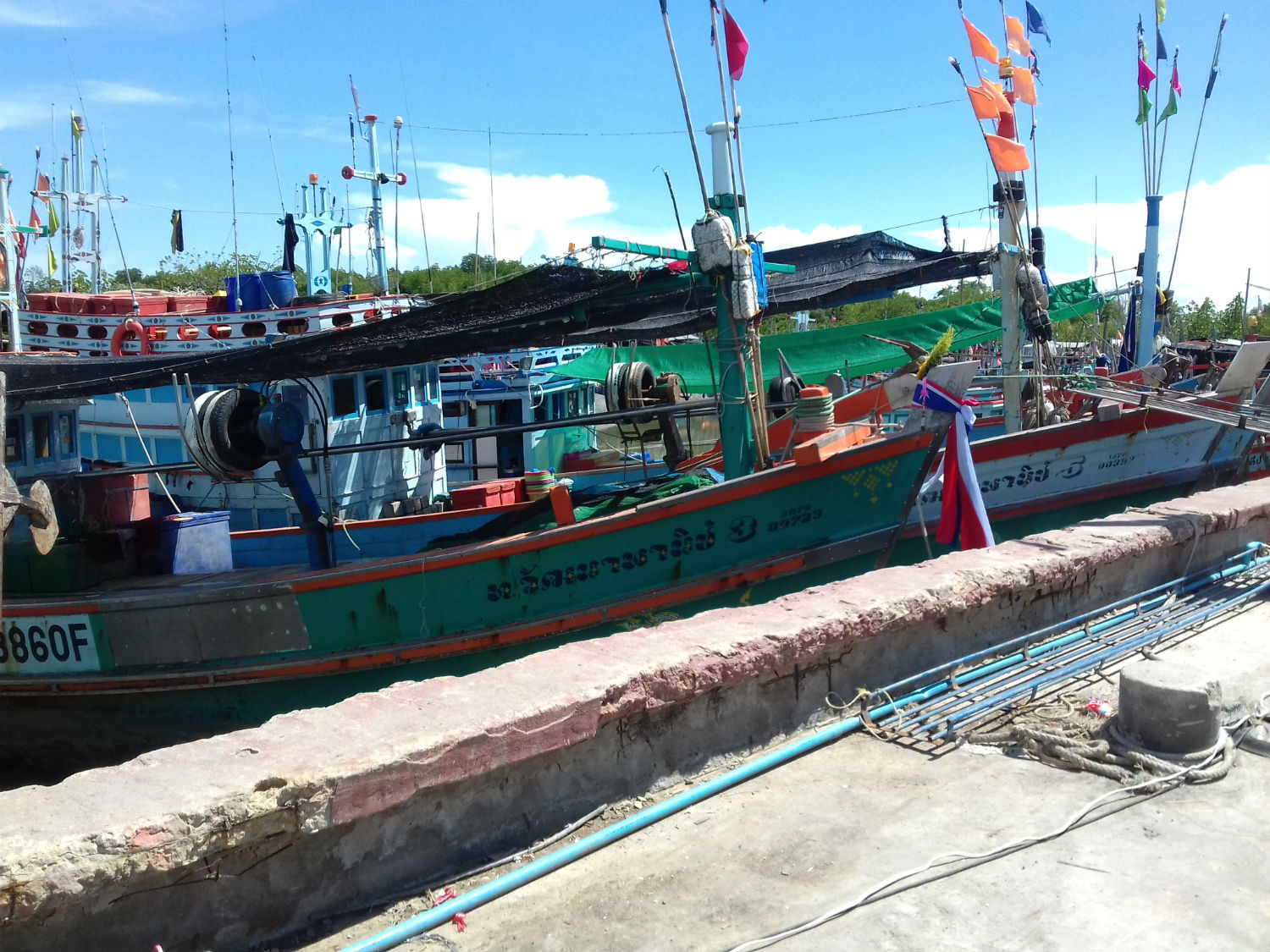
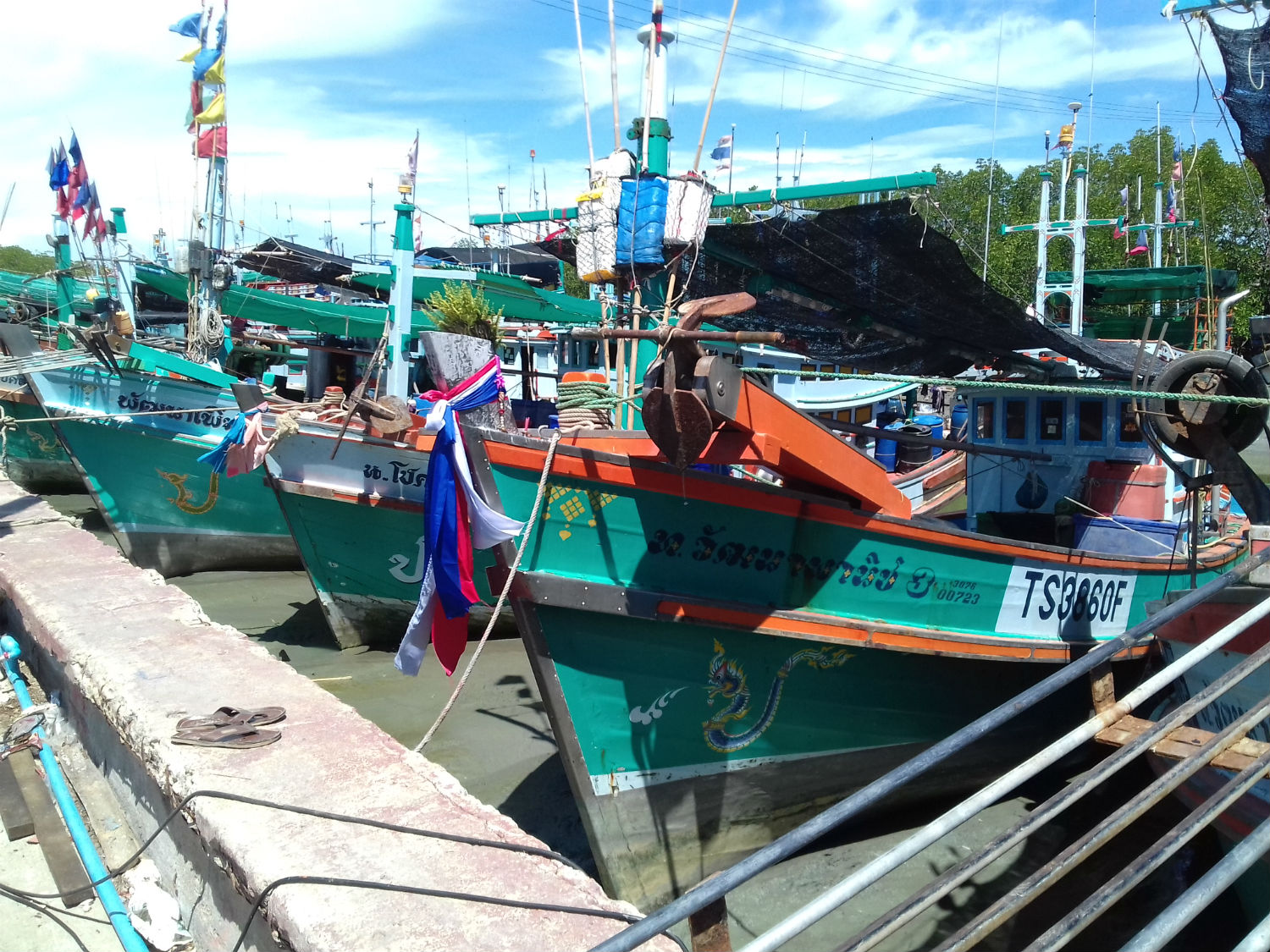 Fishing Boats at Laem Phak Bia, Phetchaburi Province
Fishing Boats at Laem Phak Bia, Phetchaburi Province
Leam Phak Bia Environmental Research and Development Project........There is enough information in this title to suggest something interesting; at least I know it’s not a temple. Having noticed it on the way down it’s got to be worth a look and is obviously open to the public. Located next to Wat Laem Phak Bia it’s signposted from the main road 4028. Arriving at the site there is a hall and a checkpoint but the later is for the purpose of directing visitors to either a tram or a bicycle. Sound familiar? Yes, this is another of King Rama IX’s initiatives. By way of introduction, there’s no better way than to use the King’s words:
The King Says........"Another important problem concerns the environment. The matter of pollution and garbage has been studied. Solutions are not difficult. There is technology to do the job. It can be done in Thailand....I am thinking of doing so, but still have to find the location for this”
“.....I said earlier that wastewater could be used in the agricultural sector. However, it requires an area of about 5,000 rai (800 hectare) to do it. It can be done successfully with the help of experts. If someone donates 5,000 rai (800 hectare) of land close to Bangkok for this purpose, it is possible to see the project before retirement.”
“The project that will be undertaken can be done. The idea is to remove toxics such as heavy metals. There are ways to do it. Next concerns atmosphere, maybe aeration is not necessary. Wastewater can either be added in a pond or the grassland. Then turn grassland into grazing land. Part of the land is used for plantation.”
The King Says........"Another important problem concerns the environment. The matter of pollution and garbage has been studied. Solutions are not difficult. There is technology to do the job. It can be done in Thailand....I am thinking of doing so, but still have to find the location for this”
“.....I said earlier that wastewater could be used in the agricultural sector. However, it requires an area of about 5,000 rai (800 hectare) to do it. It can be done successfully with the help of experts. If someone donates 5,000 rai (800 hectare) of land close to Bangkok for this purpose, it is possible to see the project before retirement.”
“The project that will be undertaken can be done. The idea is to remove toxics such as heavy metals. There are ways to do it. Next concerns atmosphere, maybe aeration is not necessary. Wastewater can either be added in a pond or the grassland. Then turn grassland into grazing land. Part of the land is used for plantation.”
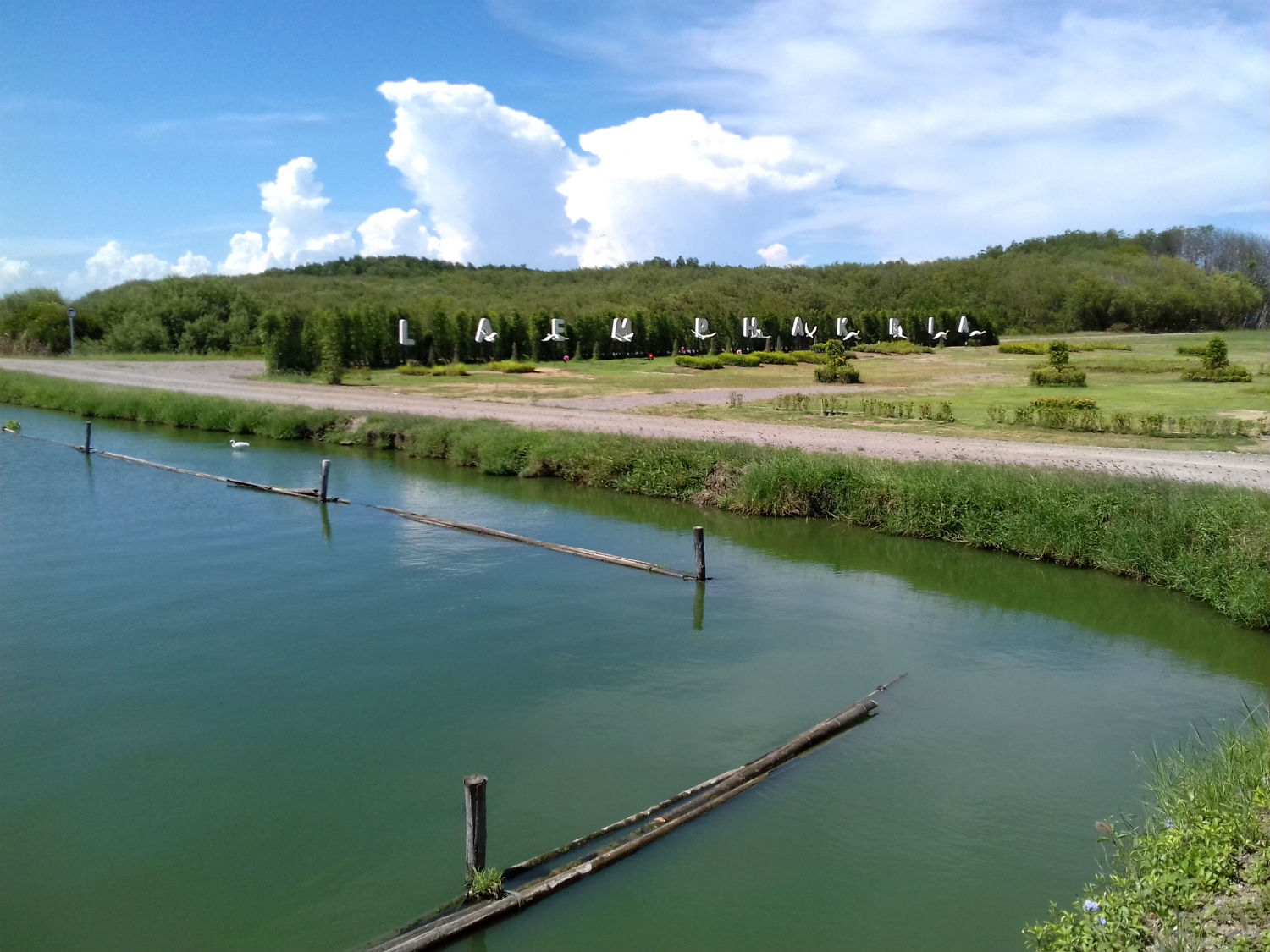
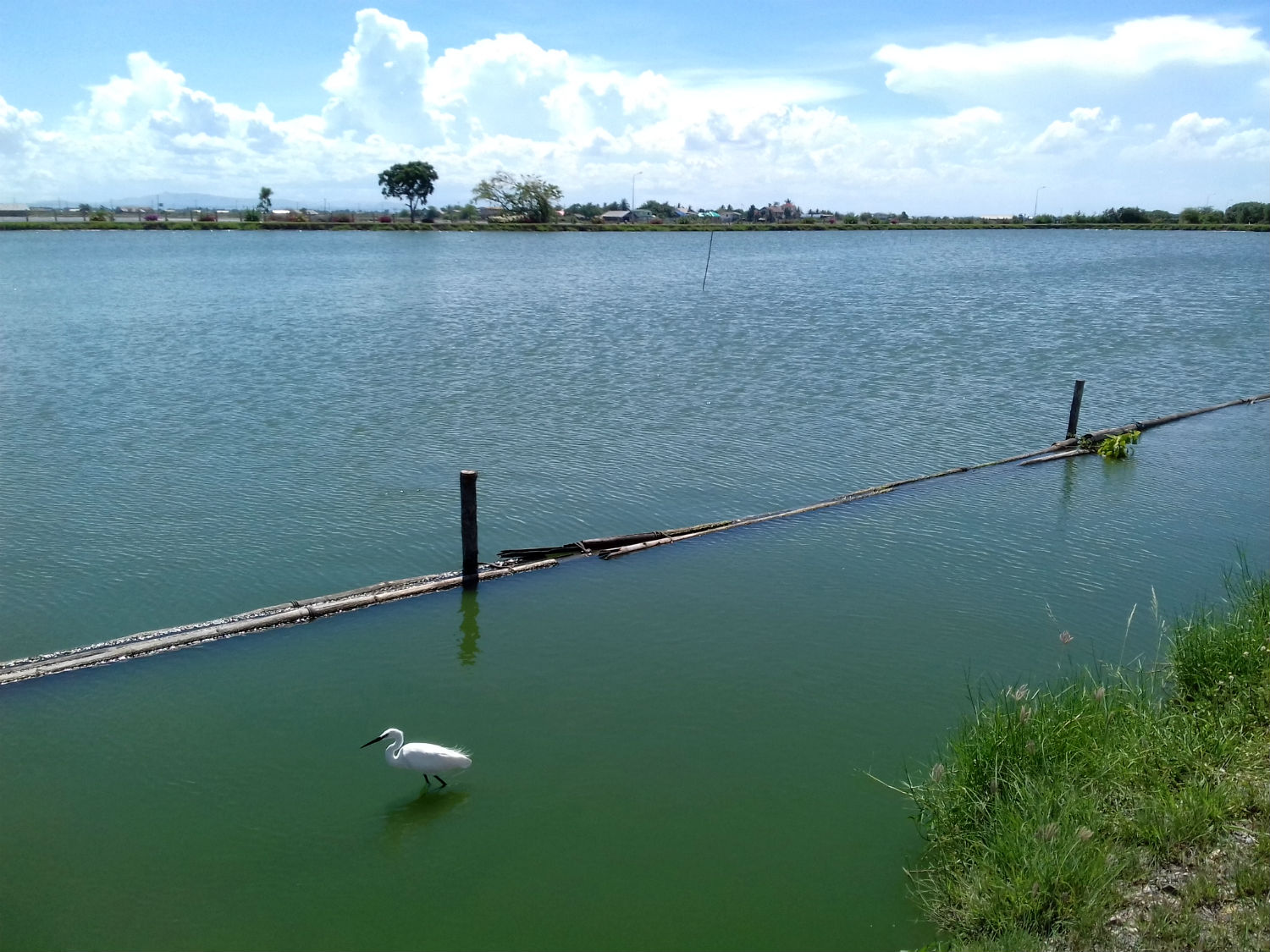
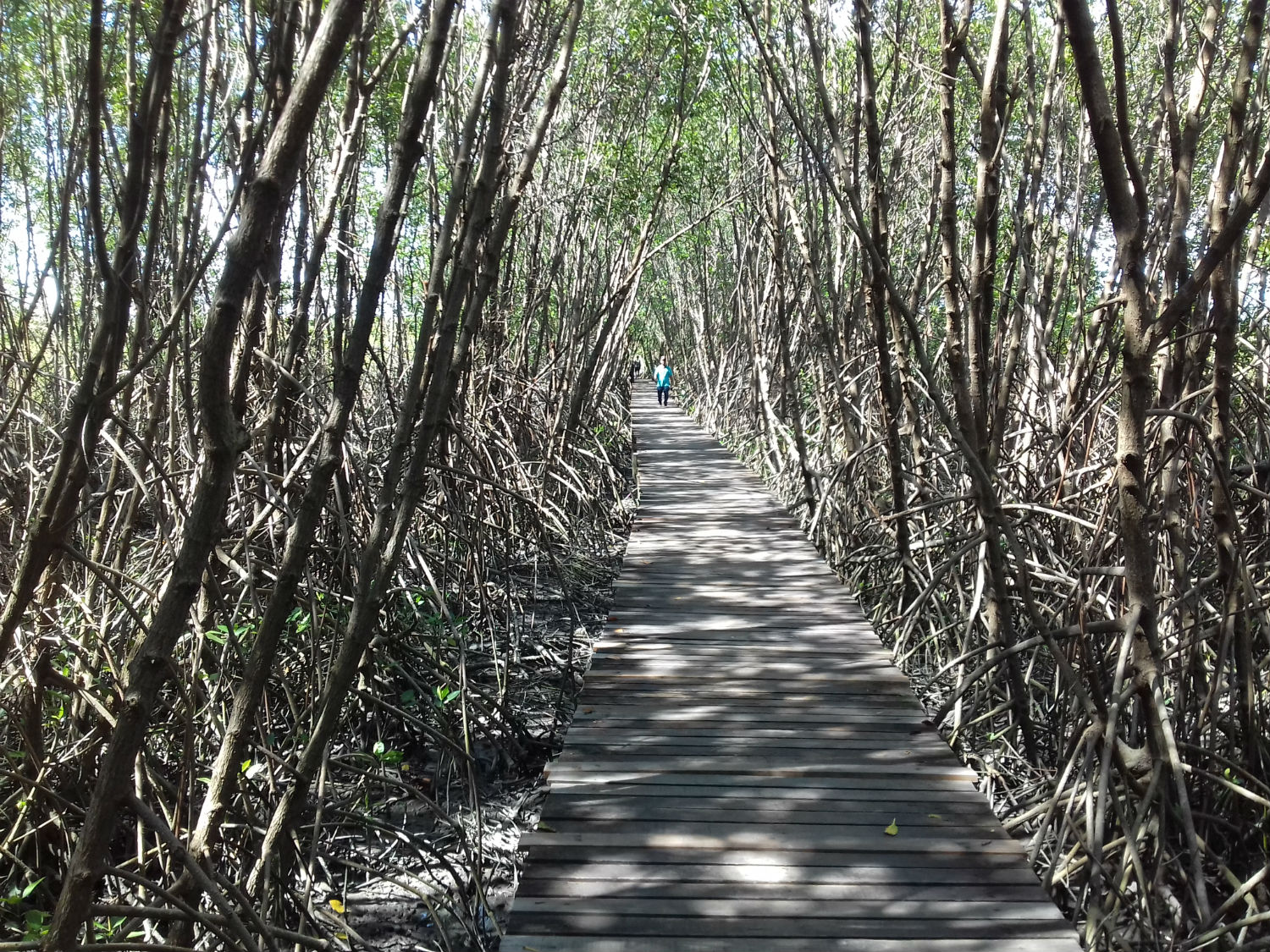
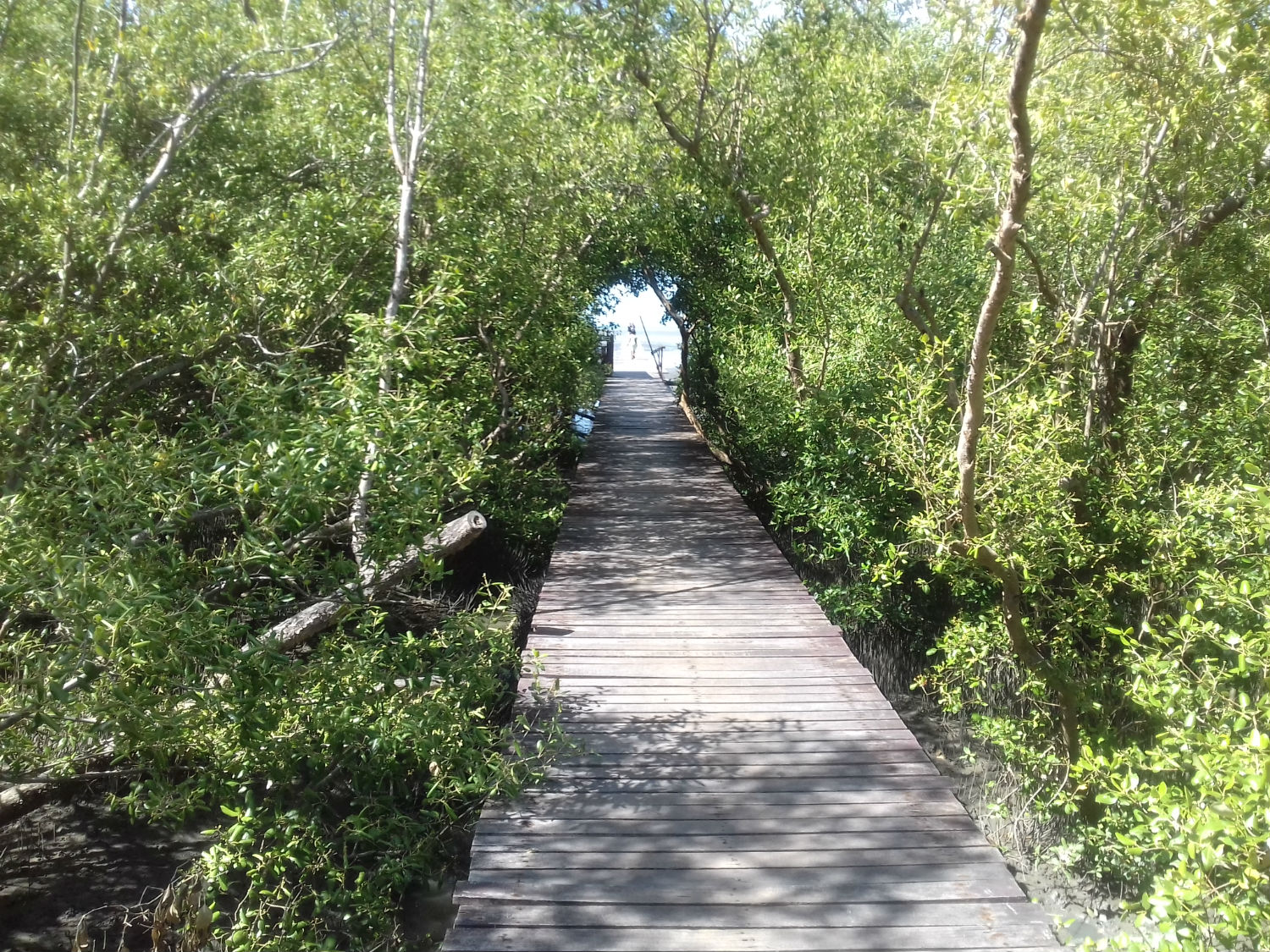
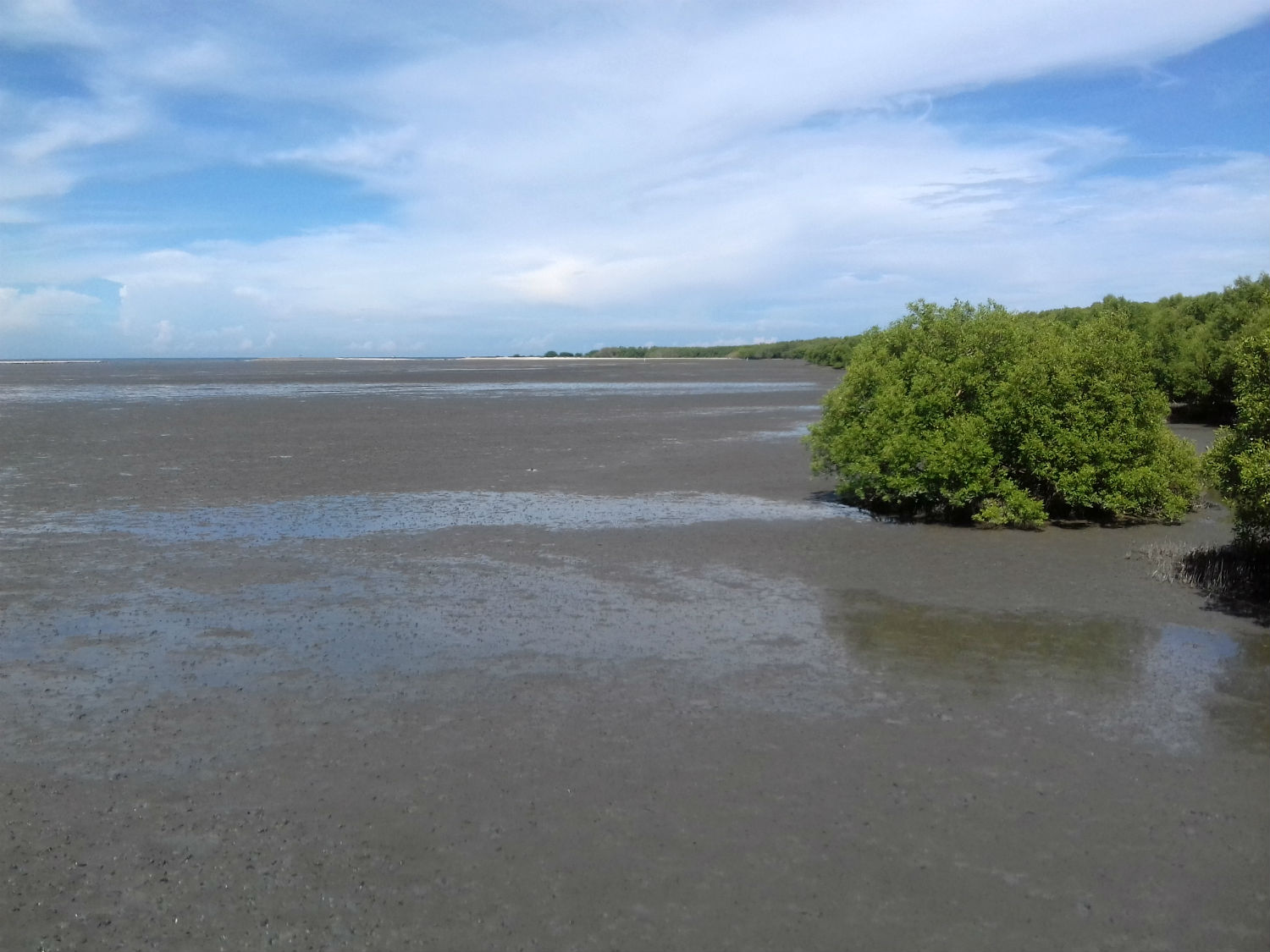
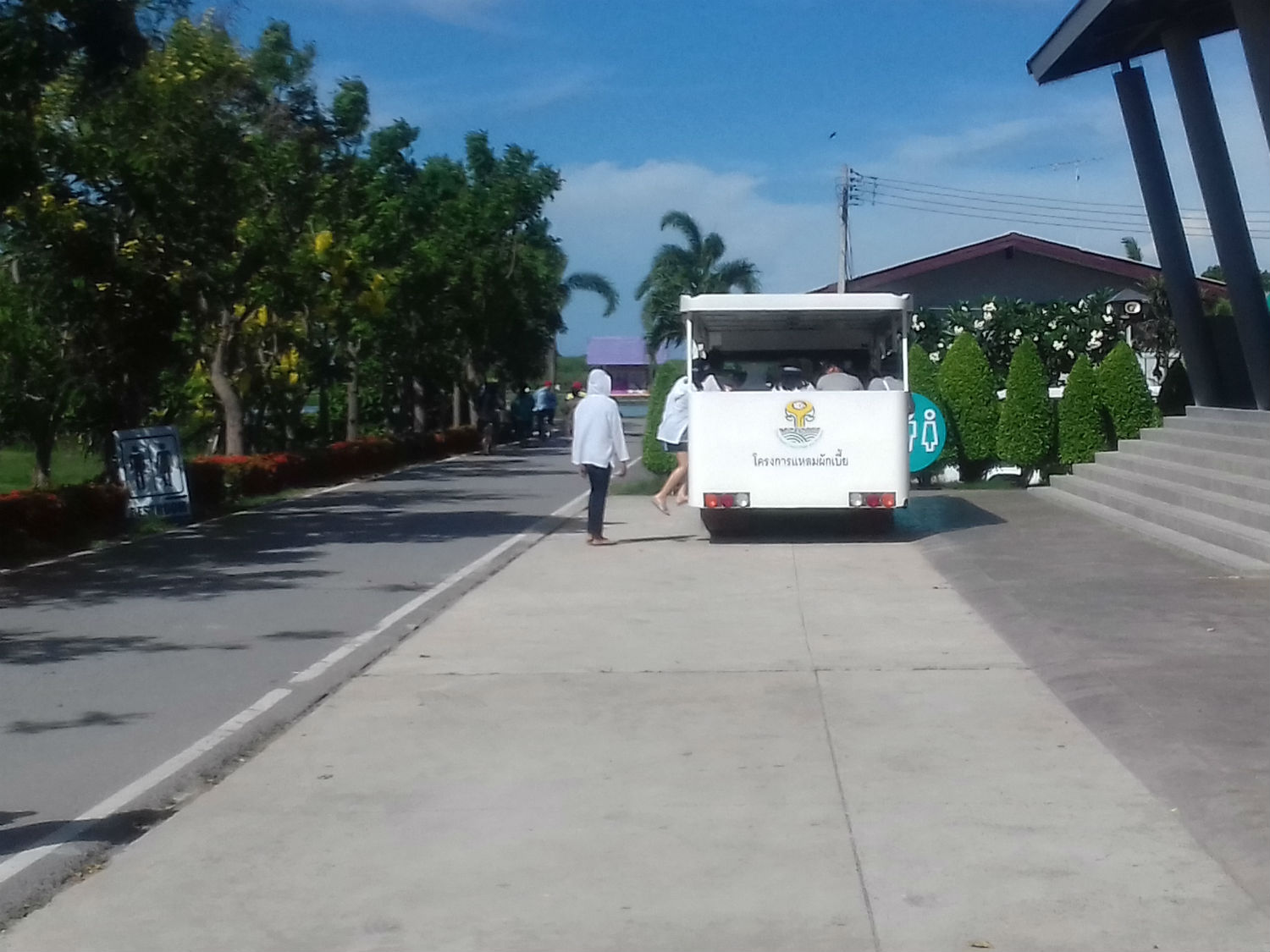 Leam Phak Bia Environmental Research and Development Project, Laem Phak Bia, Phetchaburi Province
Leam Phak Bia Environmental Research and Development Project, Laem Phak Bia, Phetchaburi Province
YES we’re in a sewerage works! However this project is all about teaching us all about environmental issues that we all create. The trip around the ponds is interesting; each one has its function. Then there is the mangrove, the margin between potentially productive land and the sea. The tram deposits us at the entrance to the mangrove forest. From there is a planked walkway cut directly through to the ocean. As it reappears in the sunlight it continues for 100 metres onto the tidal mudflats. It’s here you can gaze back and see the true beauty of the mangrove, something we are in danger of losing. As the walkway is practically straight and the walking time at least 15 minutes, I calculate that here the mangrove is about a kilometre deep. With this excursion absorbing at least an hour there’s enough time to consider the processes involved here. The technology is simple but effective with up to 80% of the sewerage recycled as treated water. The rest can be periodically collected and suitably processed for agricultural use. The treated water is clean enough to raise fish while more is pumped into the mangrove forest itself which when mixed with seawater, helps to sustain it and the creatures that live in it. It’s a fascinating story of an initiative that might turn the tide, no pun intended, of mangrove destruction and environmental disaster.
As a final thought while I consider the good work that goes on here, while there appears to be some support from visitors to this project, tens if not scores times more bodies are lying on the beach at Chao Samran, not that far away, creating waste that someone has to deal with!
Art of Salt........ Thailand if nothing is not lacking in artistic creativity. With temples beautifully adored with religious art, why not create something here out of something this area has in abundance: Salt. Still in Phak Bia district heading north, curious salt statues are situtated on open ground between the road and the Gulf.
As a final thought while I consider the good work that goes on here, while there appears to be some support from visitors to this project, tens if not scores times more bodies are lying on the beach at Chao Samran, not that far away, creating waste that someone has to deal with!
Art of Salt........ Thailand if nothing is not lacking in artistic creativity. With temples beautifully adored with religious art, why not create something here out of something this area has in abundance: Salt. Still in Phak Bia district heading north, curious salt statues are situtated on open ground between the road and the Gulf.
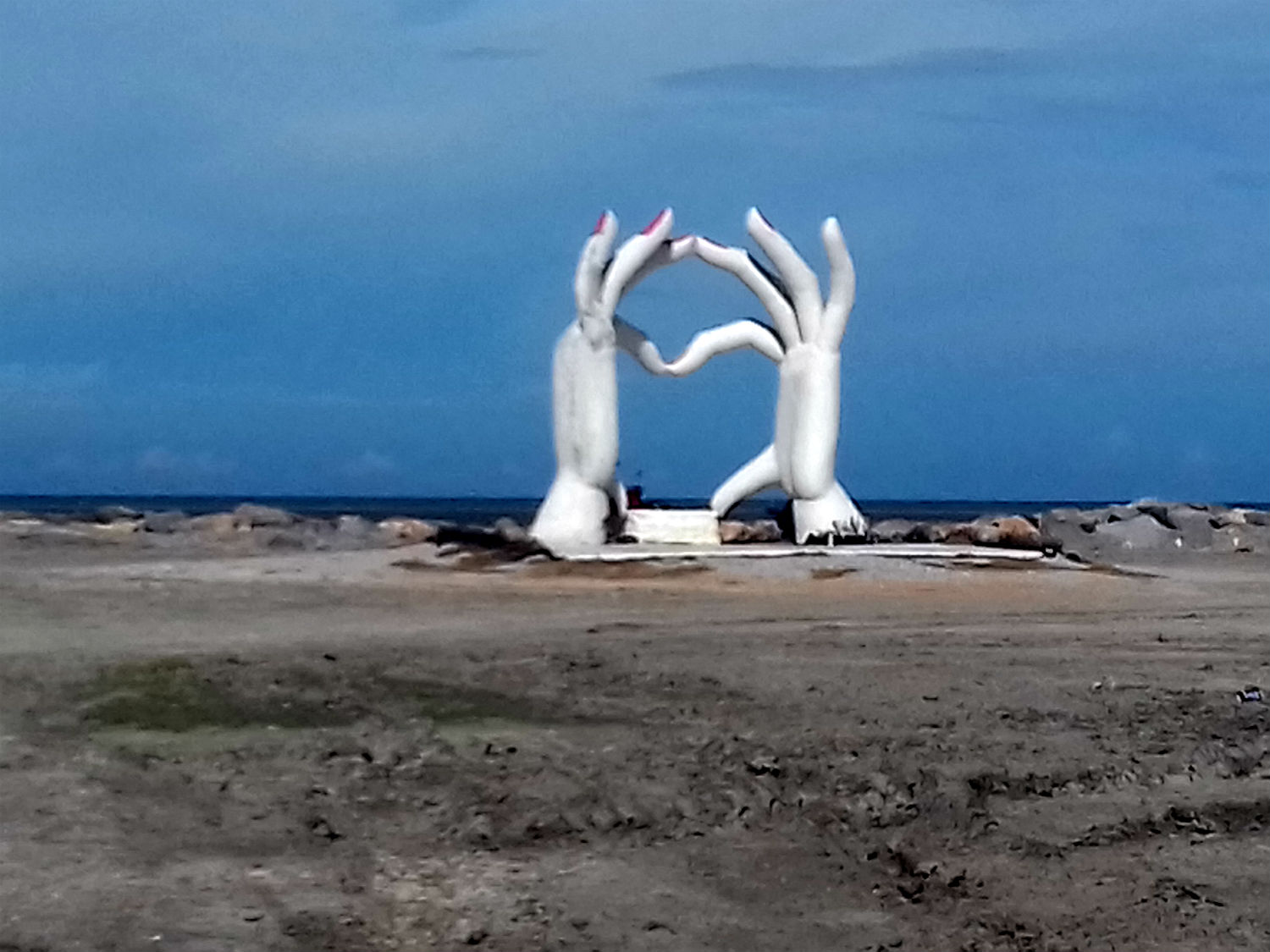
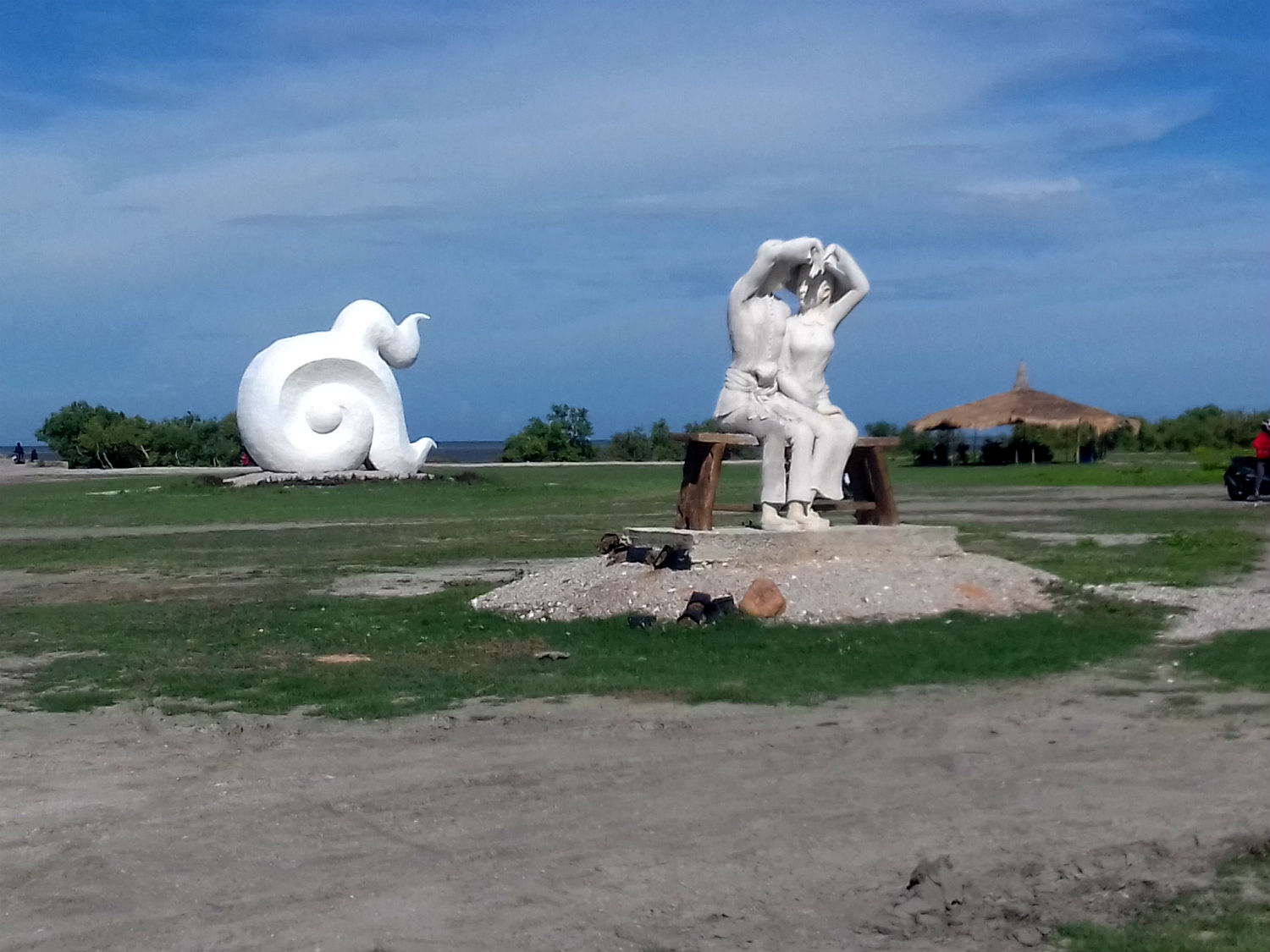
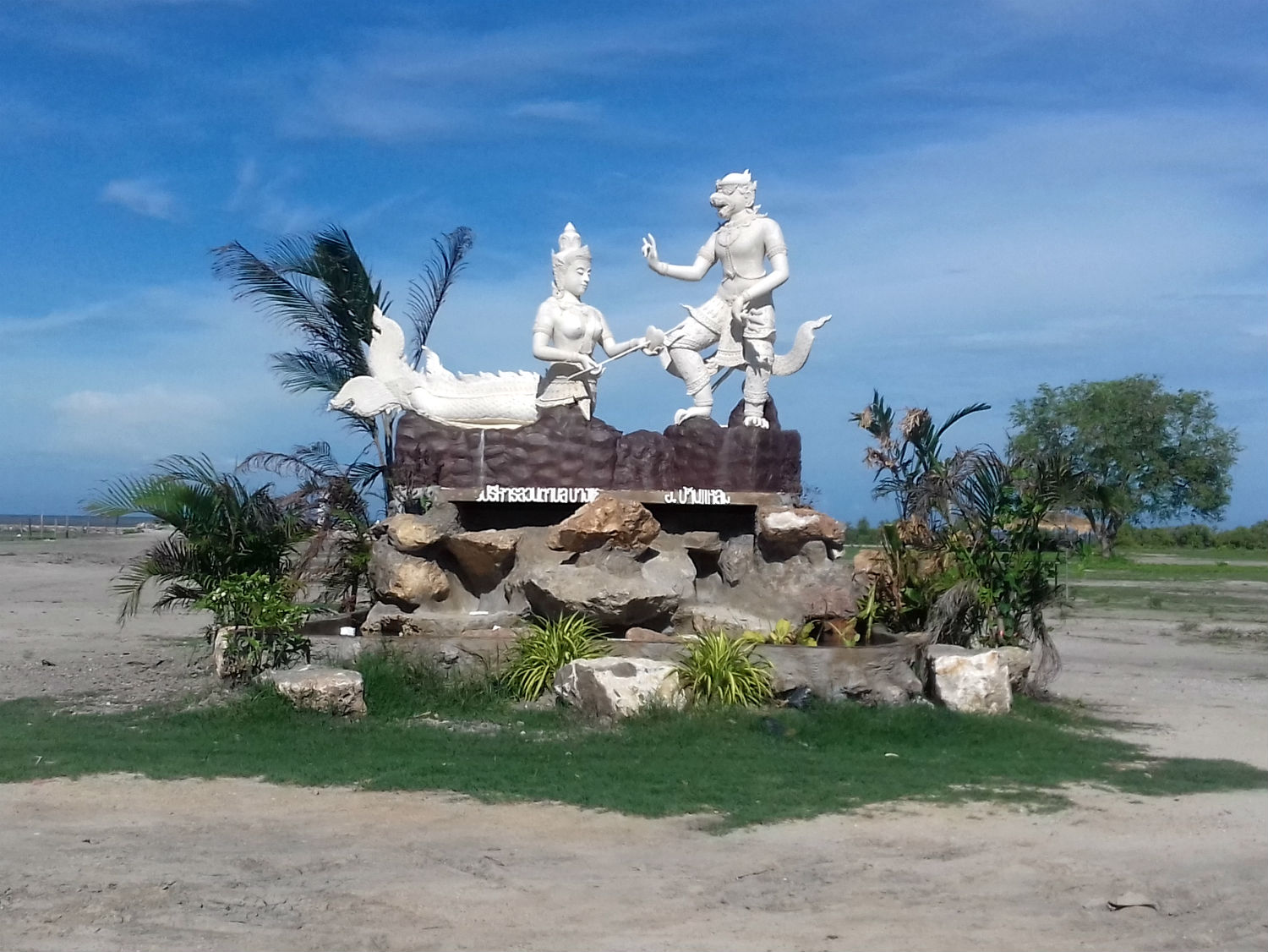 Art of Salt, Ban Laem District, Phetchaburi Province
Art of Salt, Ban Laem District, Phetchaburi Province
Phetchaburi Aquacultic Demonstration Farm........Heading further up the coast at least we’re closing the distance to Bangkok but time is running out. Not far on the right is the Phetchaburi Aquacultic Demonstration Farm. This is yet another Royal Project but there’s no information in English or anyone about to answer questions. Apart from wonderfully laid out gardens, a pond with bridges and pavilion there are a number of storage tanks with quite sophisticated water circulation systems, the only thing I can read in English being ‘high salinity’. Inspection of the tanks reveals some examples of the colourful and exotic marine fish that are found around the coast of Thailand. This is clearly an experimental station with a number of studies taking place. One tank appears to be an attempt at rejuvenating coral. Amazing if that works.
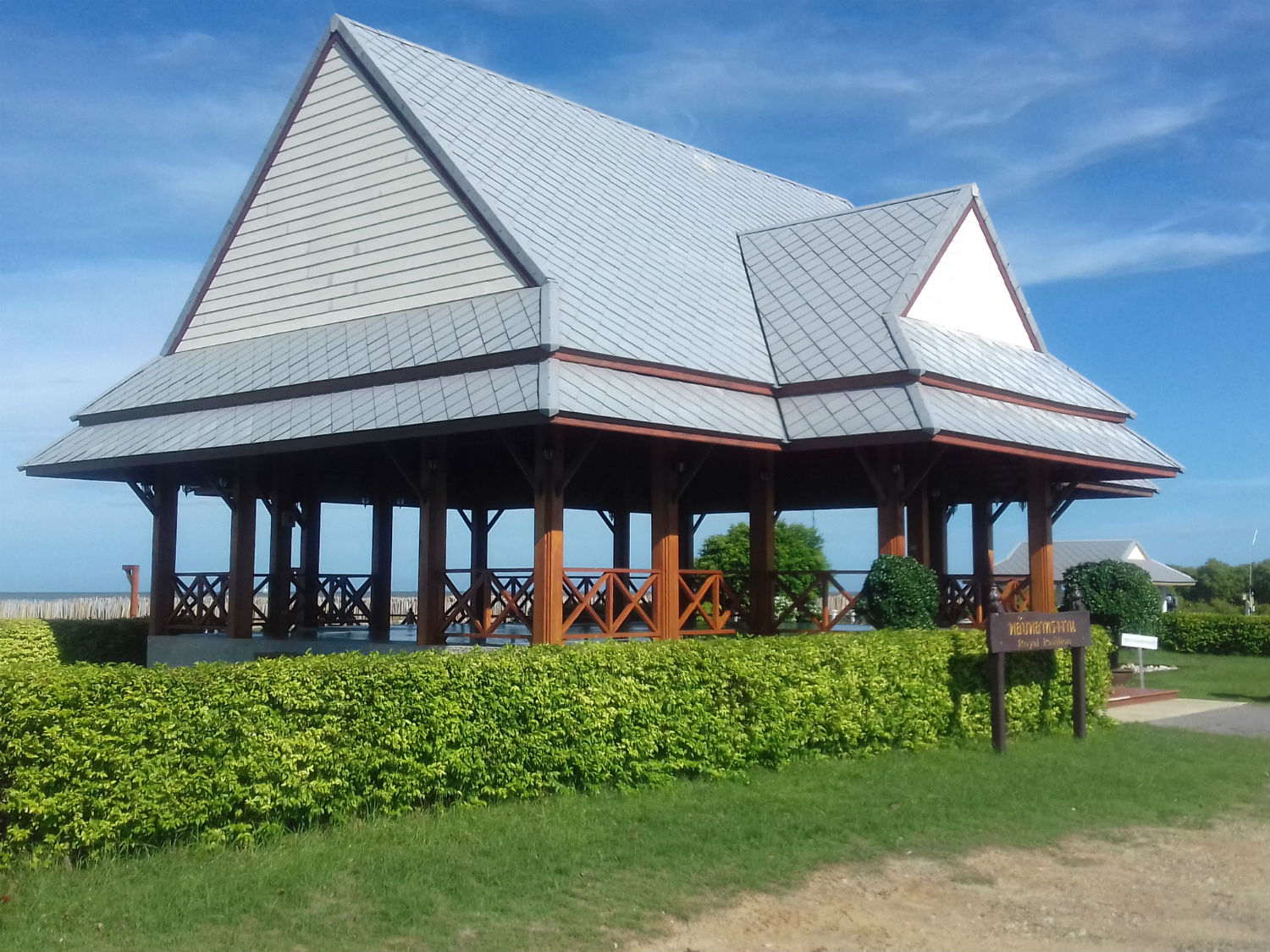
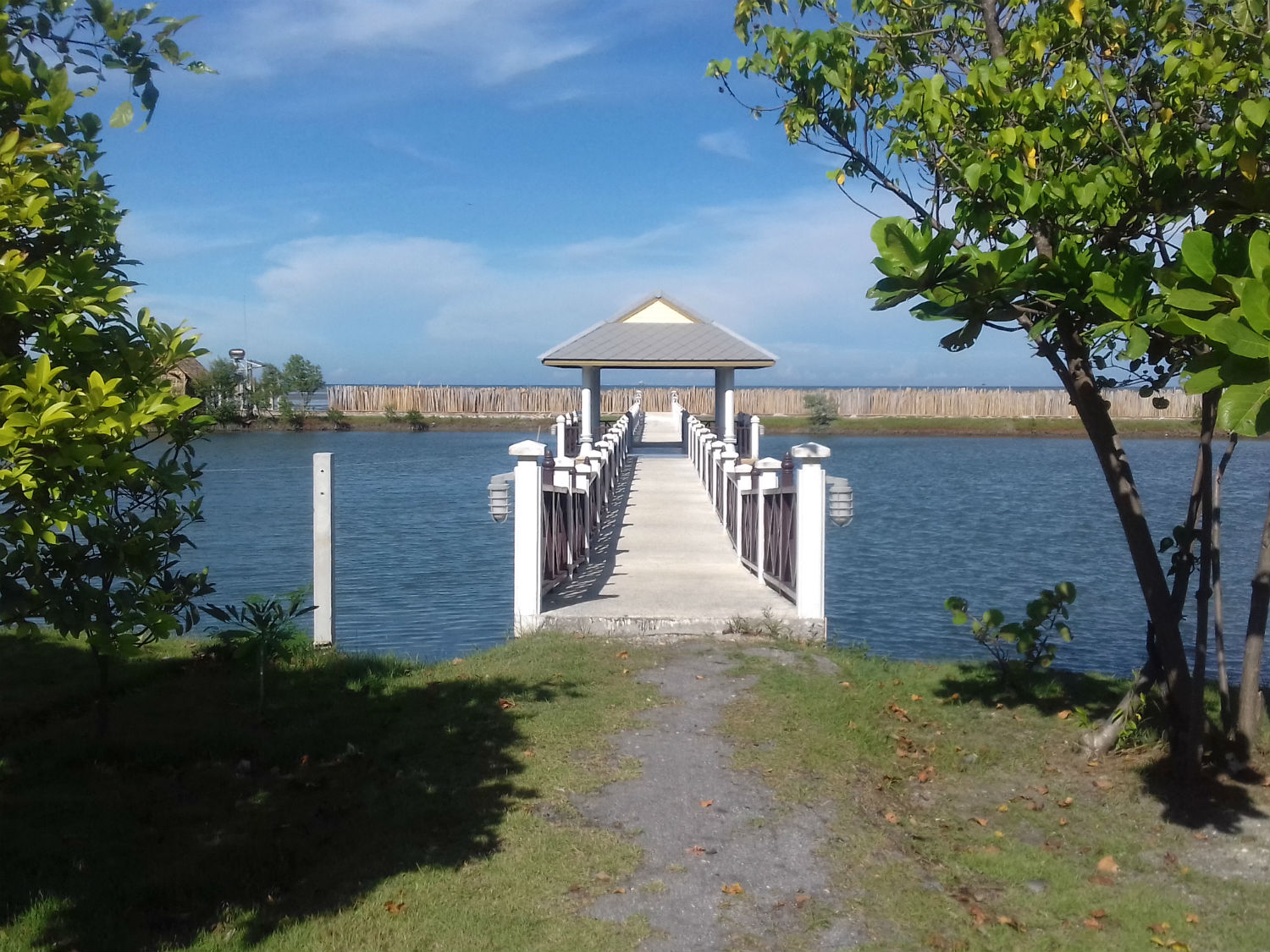
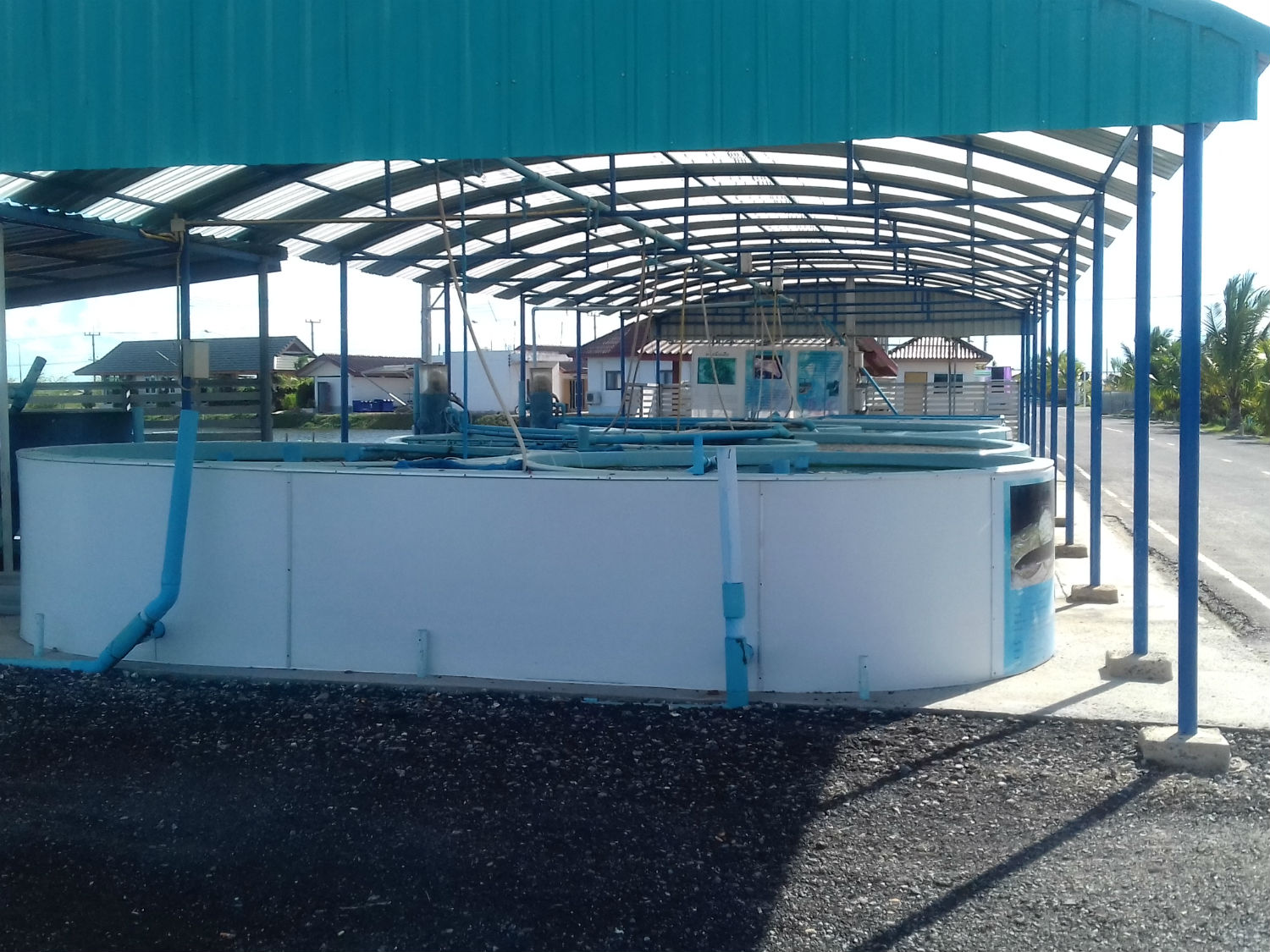 Phetchaburi Aquacultic Demonstration Farm, Ban Laem District, Phetchaburi Province
Phetchaburi Aquacultic Demonstration Farm, Ban Laem District, Phetchaburi Province
Congestion........As I glance at the time and then enter settings on GPS for our return to Bangkok I’m in for a shock. All those bodies I mentioned earlier are returning. If I left now it would still be 7.30pm before I arrive back. With any further sites visits now impossible we make our way back into Samut Songkram province and rejoin Highway 35 (Rama II Road). With the GPS showing the route red for at least 20 kilometres, it’s not long before we hit queuing traffic nose to tail. By this time we’ve refuelled and I’m driving. They say patience is a virtue but that’s not a quality I’m noted for, it’s only a question of time before I get twitchy. After an hour at a crawl barely 10 kilometres has been achieved, my only consolation is that I could not have done things differently. There was no plan B. I recon I can carry on for another 30 minutes during which time the traffic is moving but still heavy. In Samut Sakhon as its getting dark I prefer Katoon to drive who seems more adapt at driving in these conditions. The changeover complete, I check the GPS. The ETA is now 8pm but I see no more extended delays. Thankfully the traffic moving through the toll ways is moving well and there are no further holdups. We arrive bang on the revised time and with both of us still full from lunch we can skip a cooked meal and relax at last. This mini-tour is now history and so is my latest spell in Thailand, almost.